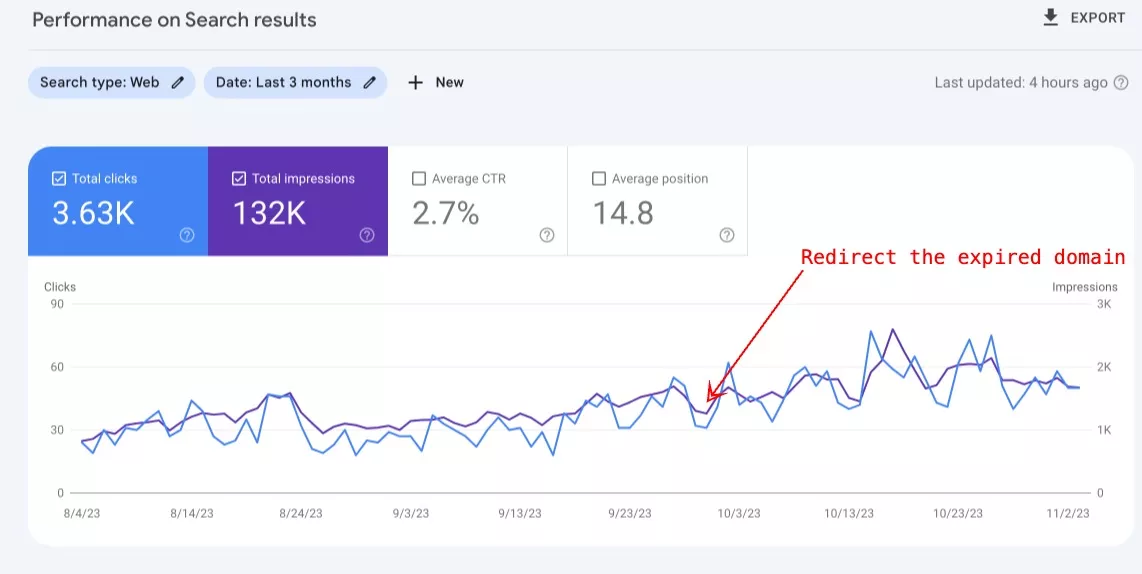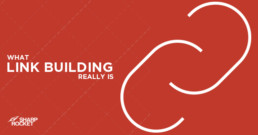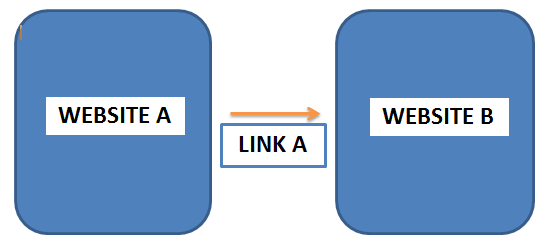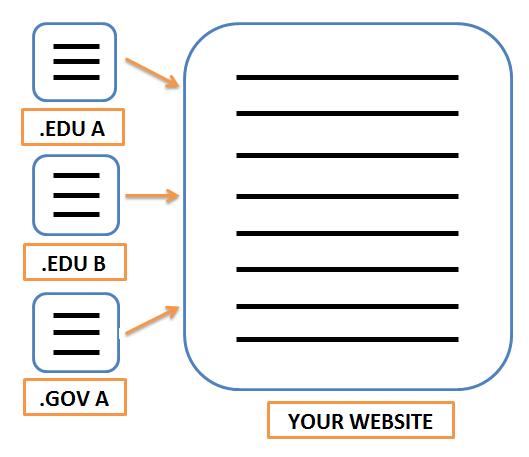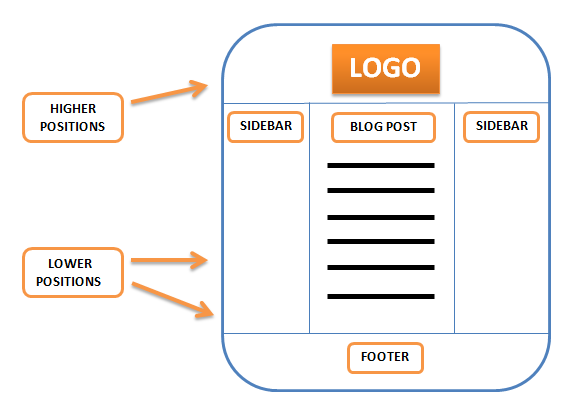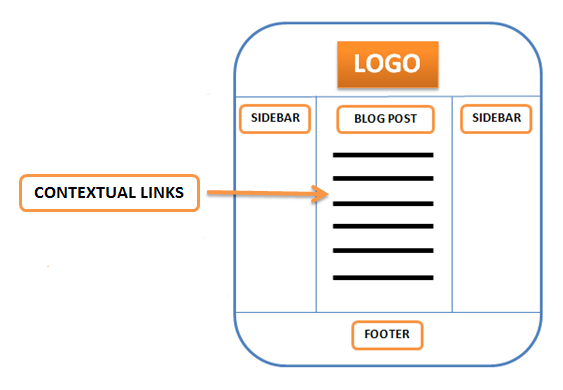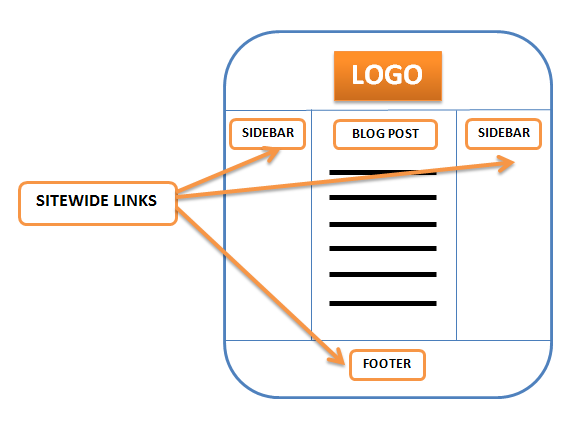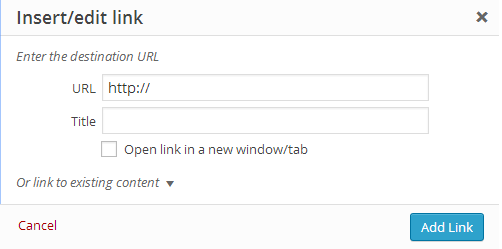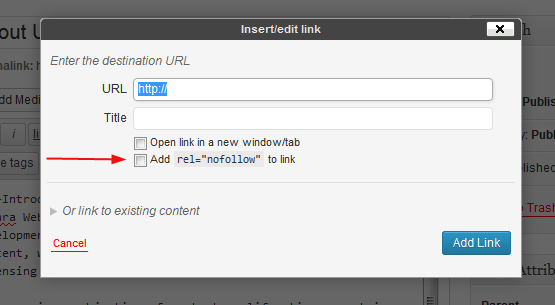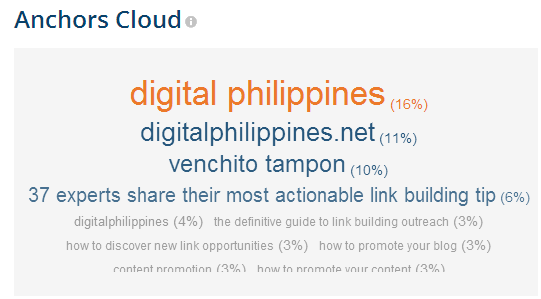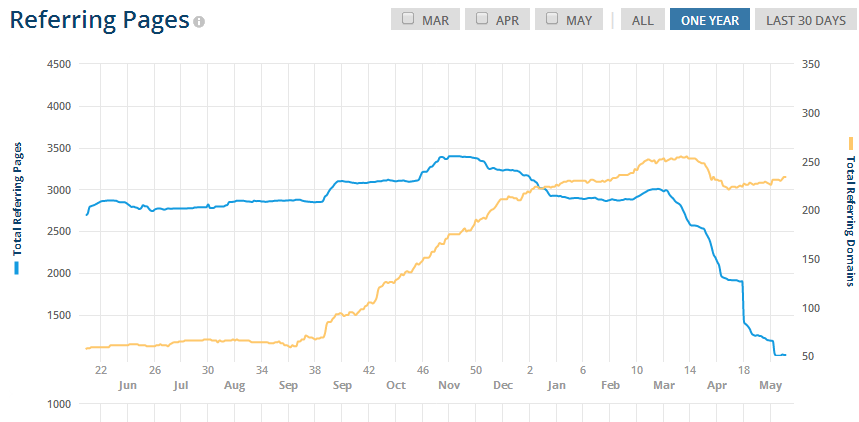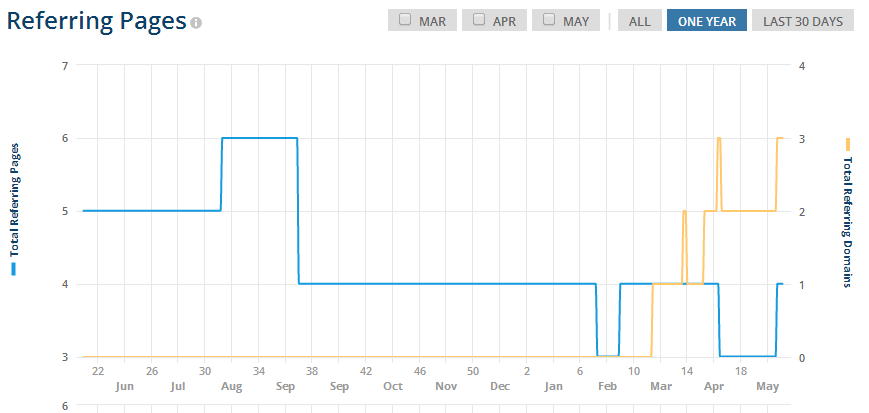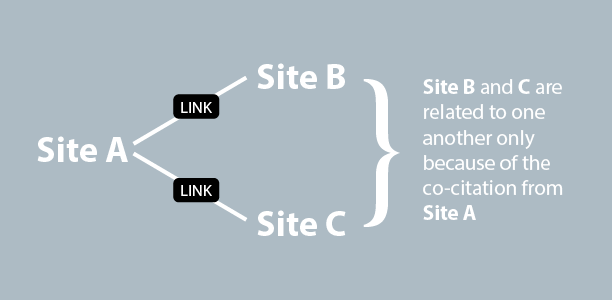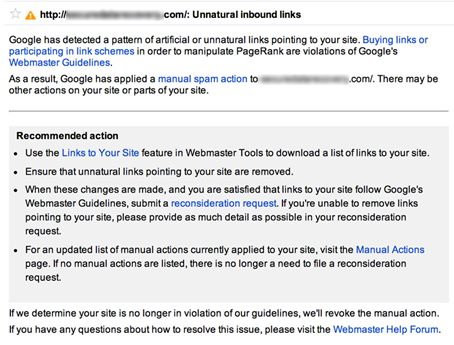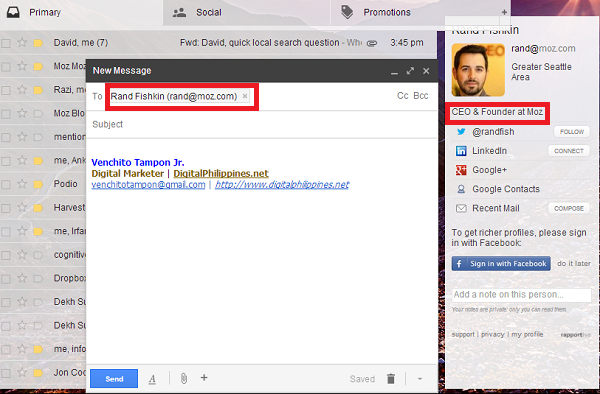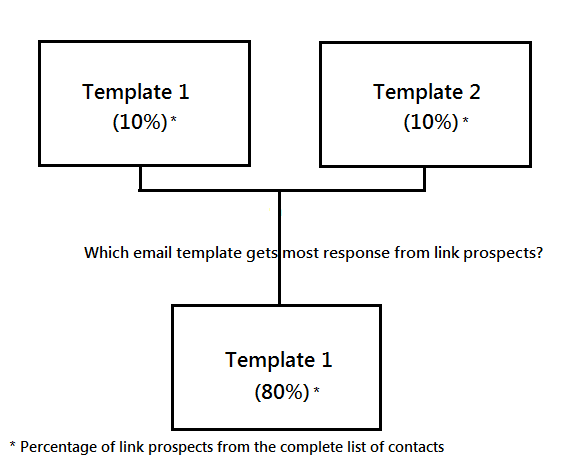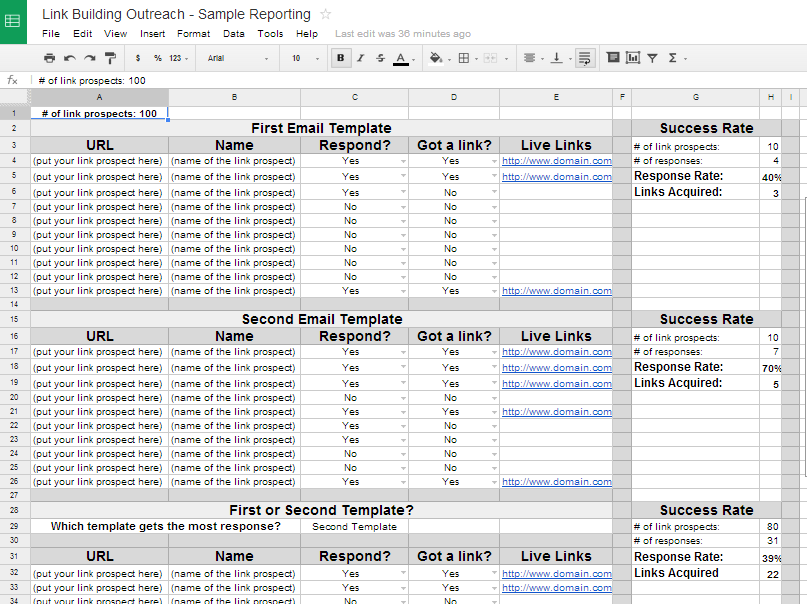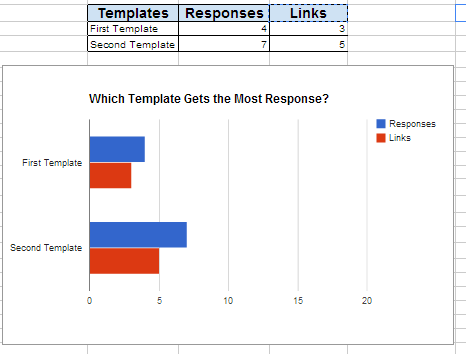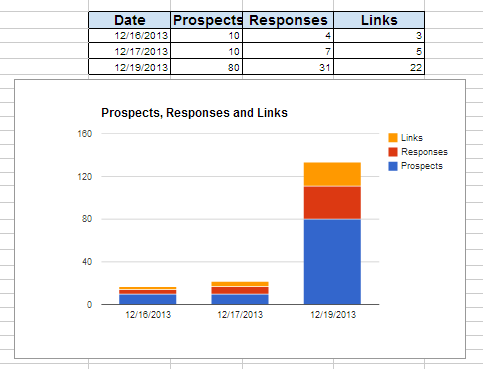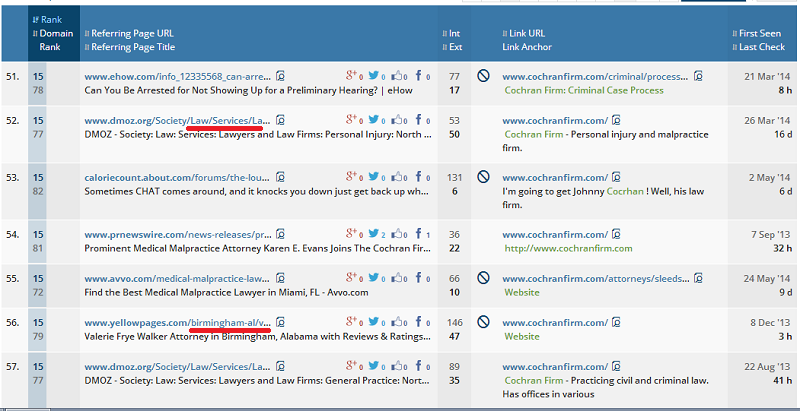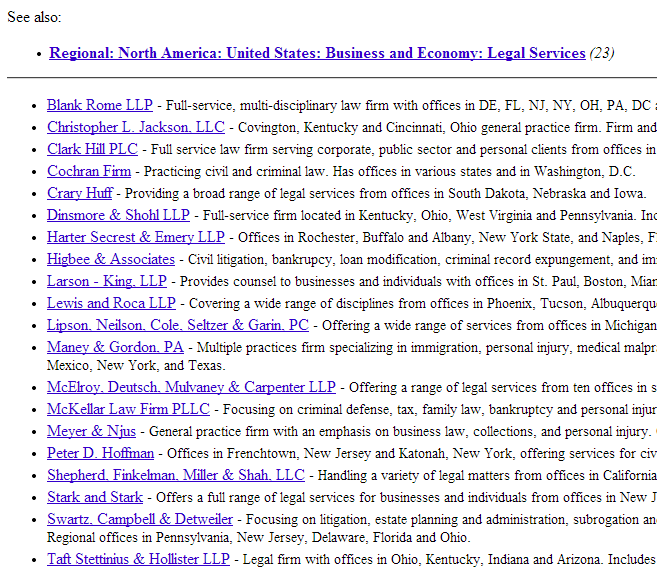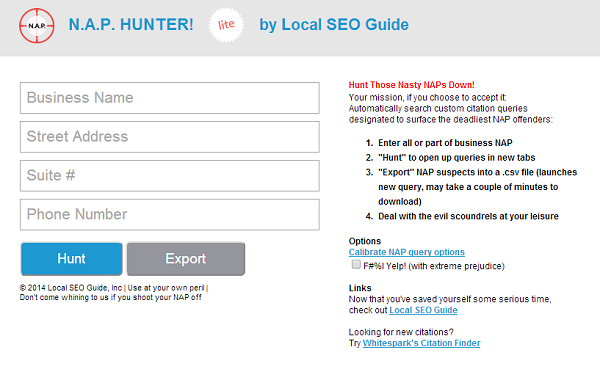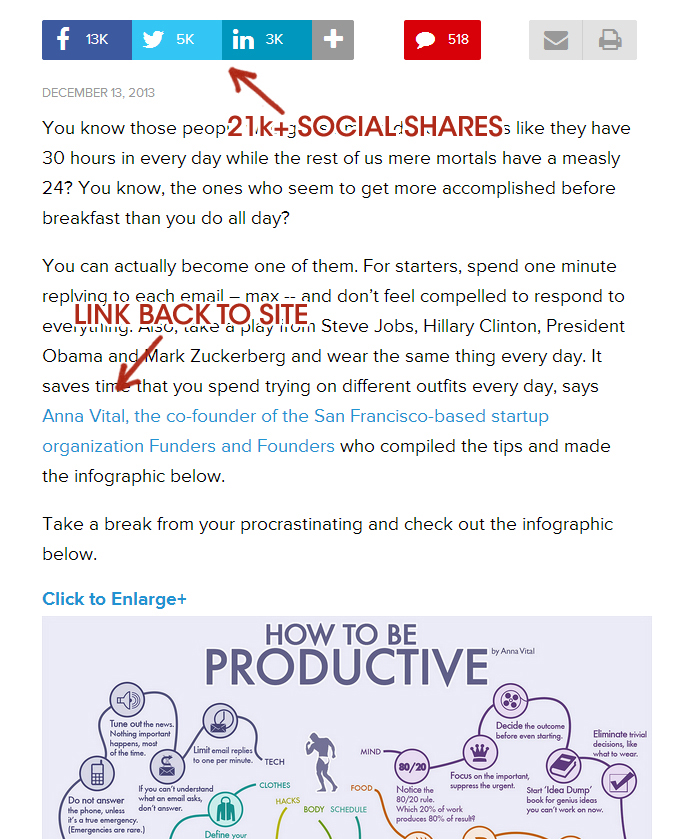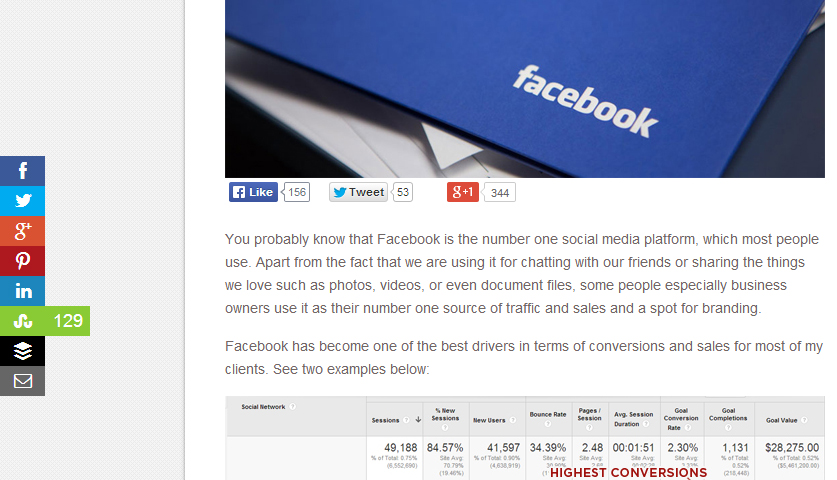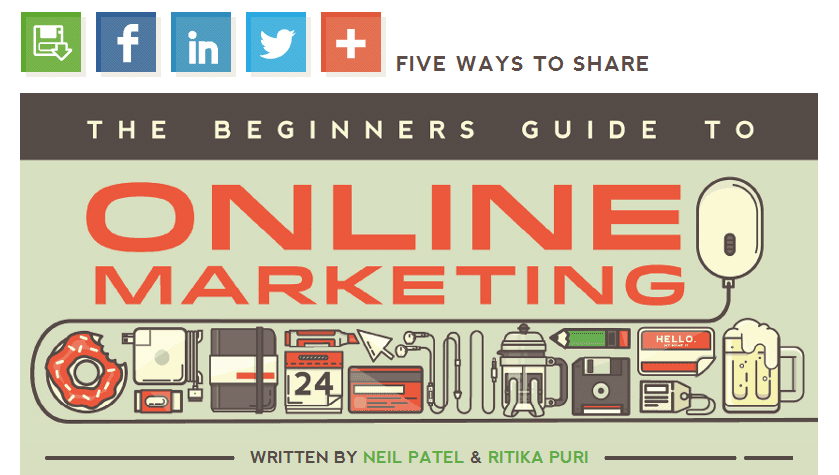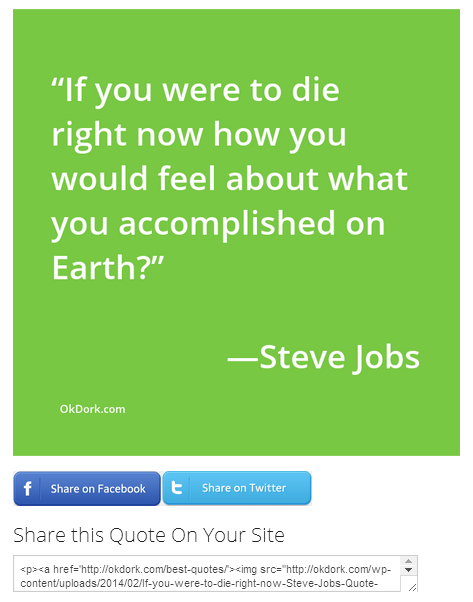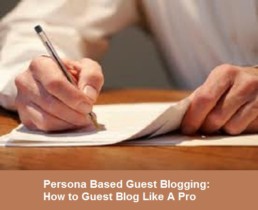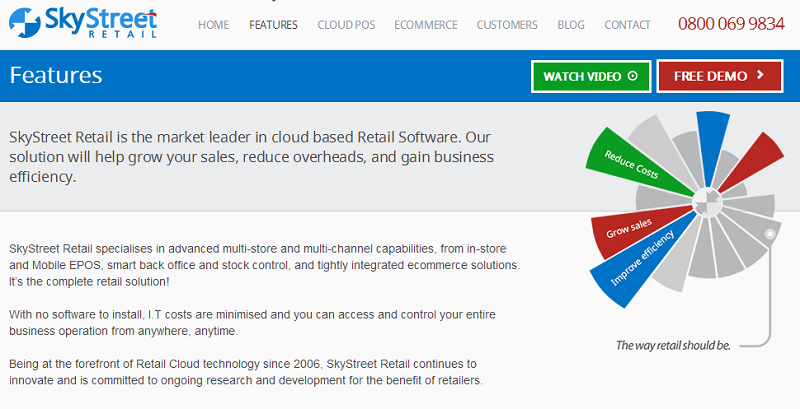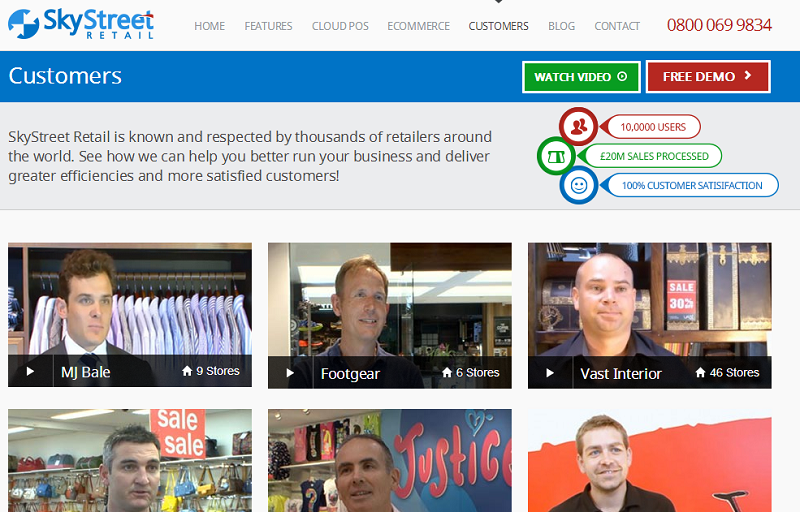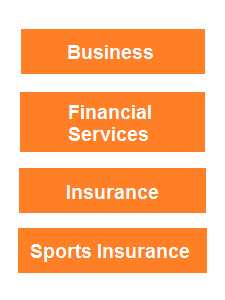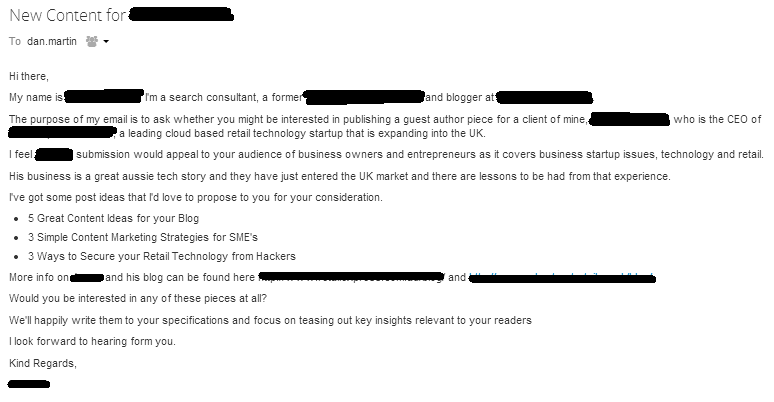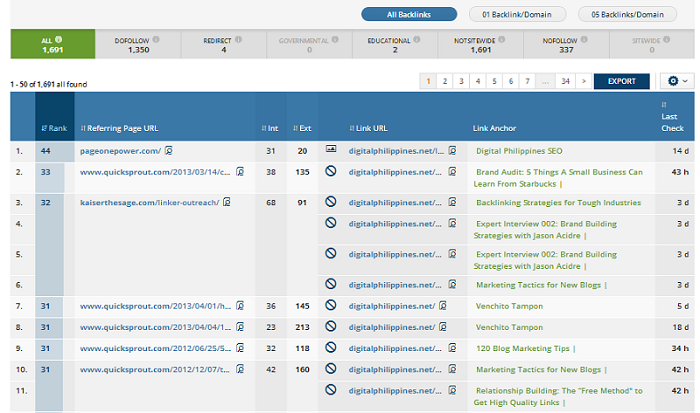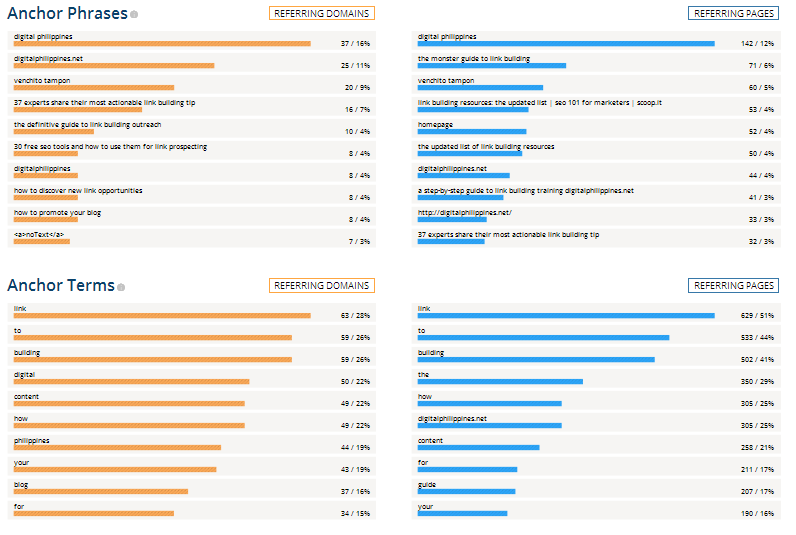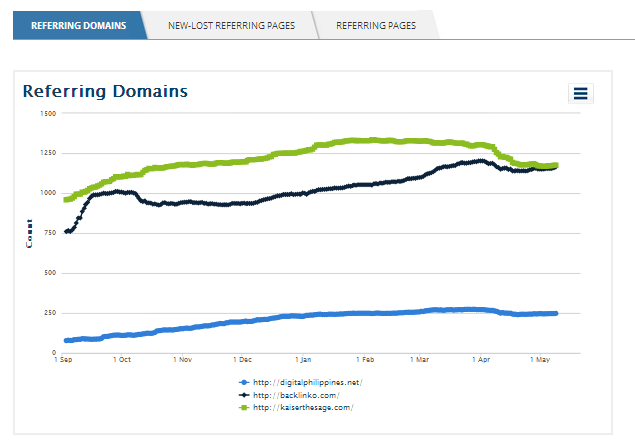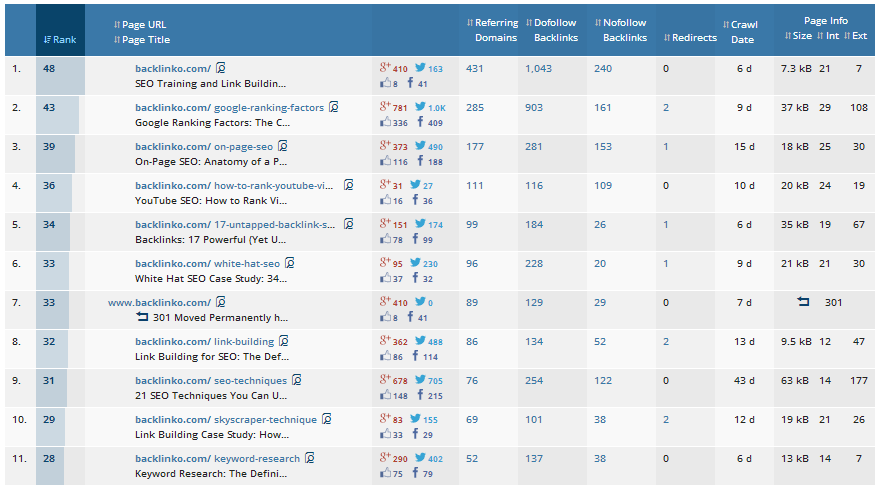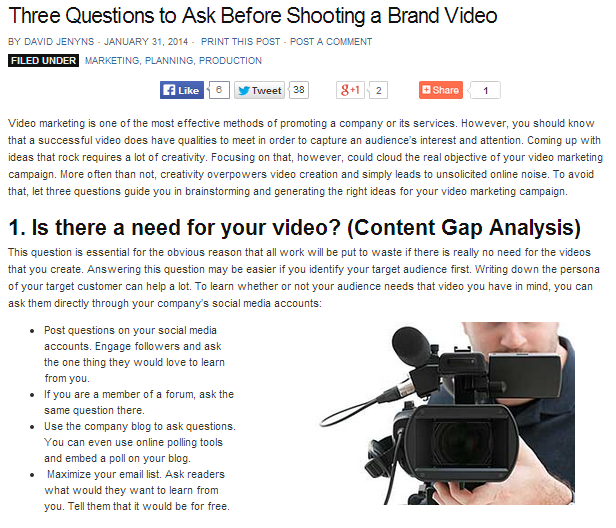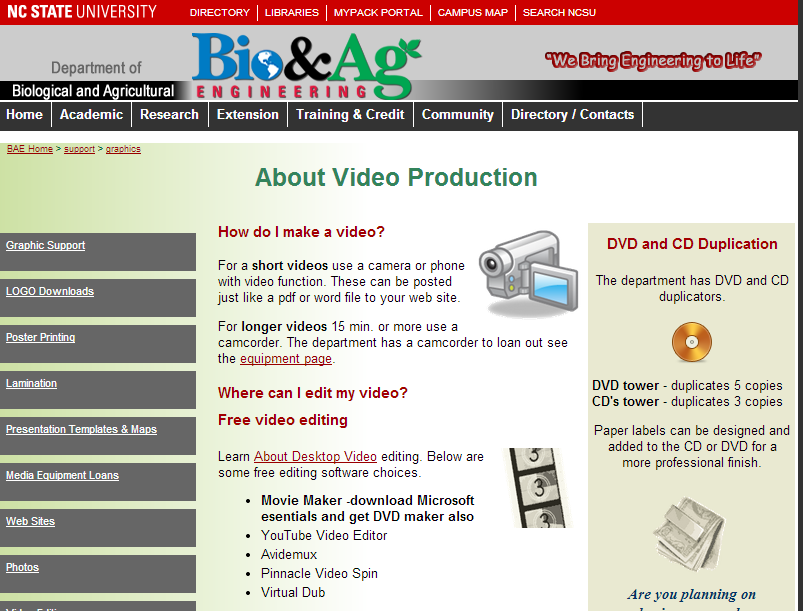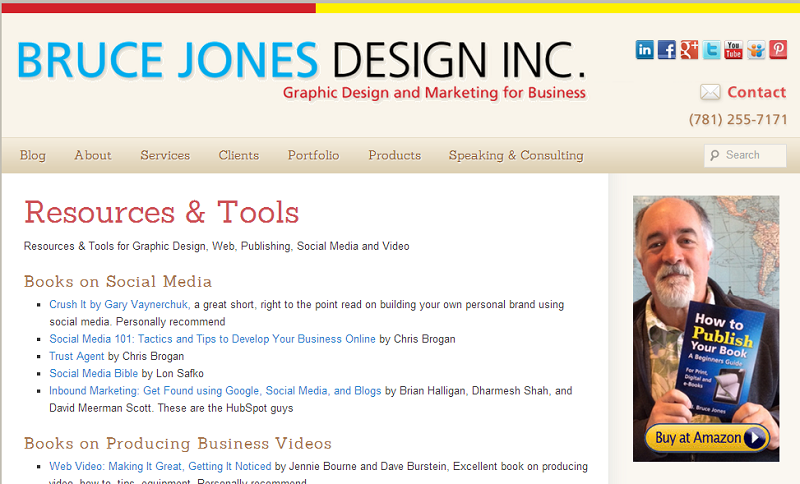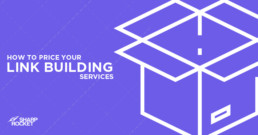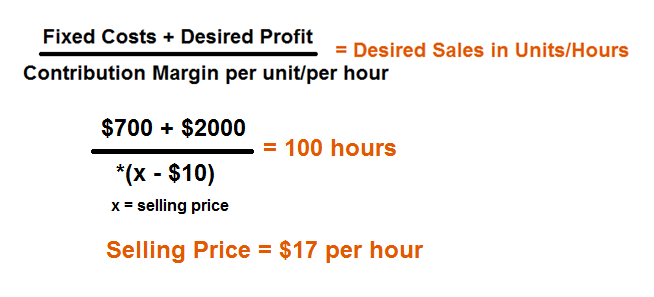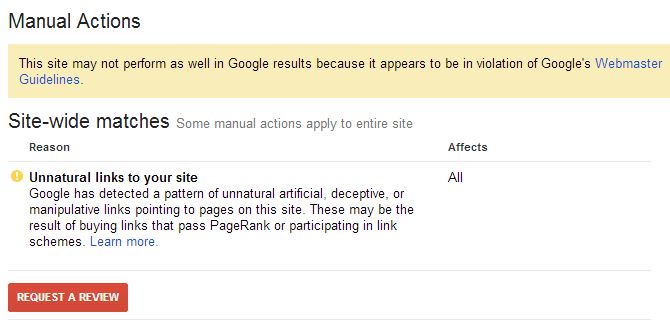SEO for Furniture Stores: A Comprehensive Guide to Ranking Higher and Driving Sales
Furniture SEO is dominated by large retailers like Amazon, Wayfair, and IKEA, which have strong brand equity, massive backlink profiles, and deep pockets for marketing.
On top of that, the furniture industry presents a unique challenge with buyers requiring research, comparison, and high customer trust—as price tags are in mid- to high-level purchases—which demands search engine optimization and optimizing the online store for optimal conversions.
What is Furniture SEO?
Furniture SEO is the process of optimizing a furniture store to increase its online search visibility. It involves technical SEO, category page and product page optimization, product listings, content marketing, link acquisition, and local SEO for physical stores—all of which help the store rank for target furniture commercial keywords.
SEO Strategies For Furniture Stores
If you seriously want to get a piece of the search pie for furniture commercial keywords in Google's SERPs, this guide will walk you through the step-by-step process of how we help furniture stores like yours make it.
Rank Faster With This Keyword Research Strategy
Unlike traditional SEO campaigns, eCommerce SEO for furniture stores involves ranking for furniture commercial keywords with category or collection pages.
The more long-tail keywords you can target and optimize for existing and new category or collection pages, the more search traffic you can acquire for your furniture store.
Avoid Broad, Highly Competitive Keywords
Unless you have strong brand equity and high domain authority (>DR50), pushing hard to rank for broad, highly competitive keywords will take you more than a year.
Take a look at the head term "patio furniture", which has 201K monthly searches (estimated) and 85% keyword difficulty (KD)—as of this writing.

The top-ranking page is Home Depot, which has strong authority and trust signals and a DR90—the page alone has 385+ unique referring domains linking to it. The cost of building it, assuming it costs $250 per link, would be somewhere around $70 to $90K, not including all the brand, trust, and authority signals the top-ranking websites have built over the decade. In short, it's not easy to rank for the head term.
That is not to say you can't outhustle these furniture giant retailers; there's a smart move to rank faster for furniture stores with strategic keyword research.
For this keyword research process, you can use either Ahrefs or SEMRush. While there are many free keyword research tools—in my experience, they only present a handful of niche keywords to target (with irrelevant metrics, to be honest).
Use High-Intent Keyword Variants
Instead of targeting "patio furniture", consider long-tail keywords that are easier to rank with category pages. Examples of these furniture variant keywords are the following:
- "3-piece patio furniture set"
- "4-piece patio furniture set"
- "wicker patio furniture set with fire pit"
- "outdoor wicker patio set"
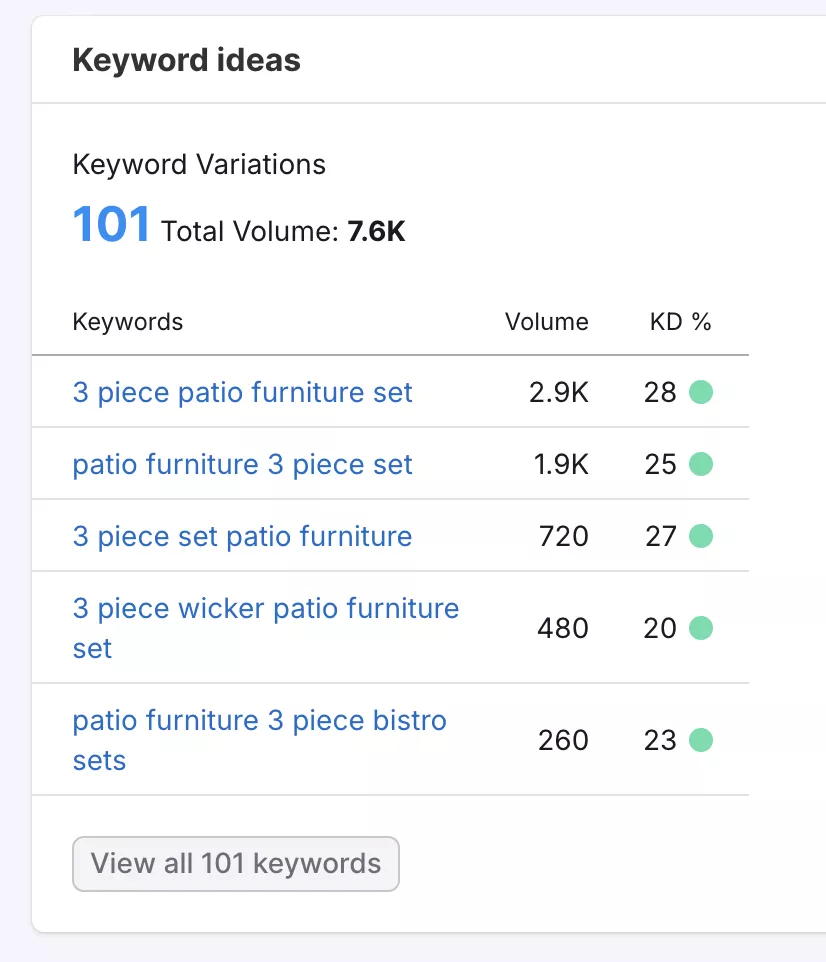
As of this writing, the keyword "3-piece patio furniture set" may have a lower search volume (2,900 monthly searches) but a significantly lower keyword difficulty of 28KD. It's one of those goldmine keywords where you can rank easily by applying foundational optimization to your category page.
You can go deeper with your keyword research process by analyzing the top-ranking web pages.
In your analysis, remove big brands like Wayfair or Home Depot, as it won't be easy to outhustle them. Instead, see if there are any ranking-growing websites you can't outrank with the right eCommerce SEO strategy.
Do Competitor Analysis For More Long Tail Commercial Keywords
Expand your list of long-tail commercial keywords by entering competitors' webpages in Ahrefs or SEMRush to see what other product keyword variants they also rank for.
Do it for every other keyword you want to target.
The key is to create a long list of long-tail buyer keywords for which you can optimize your current and many new category or collection pages.
Optimizing Furniture Category or Collection Pages
One of the common mistakes in doing SEO for furniture stores is investing most of their resources trying to rank individual product pages.
Given that users want to browse multiple options rather than land on a single product page, Google has changed its search intent for the majority of commercial keywords for online stores—it now favors collections and category pages.
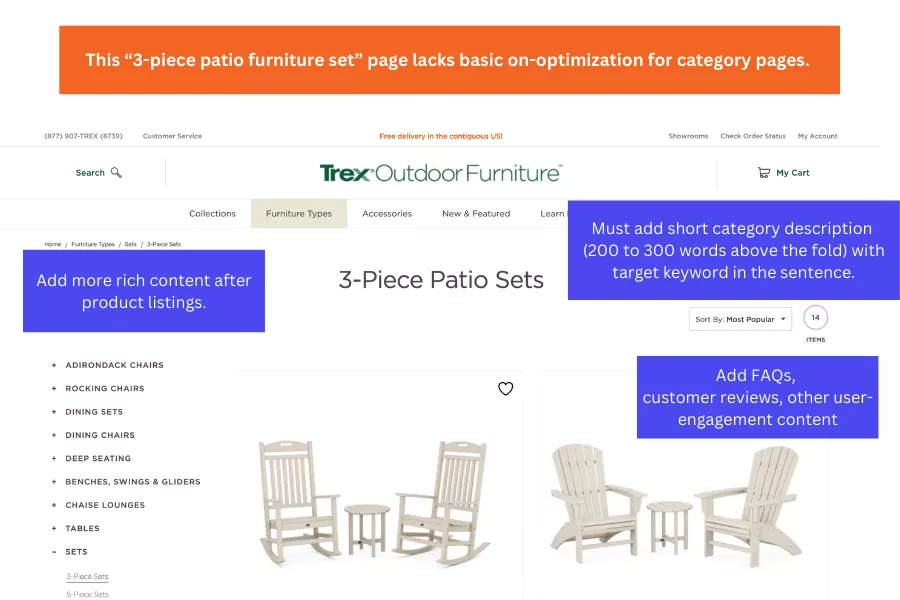
Essential On-Page Optimization for Furniture Category Pages
Category optimization is one of the main priorities of our eCommerce SEO campaigns—do it with finesse, and you'll see quick results in weeks.
Generally, a well-optimized category page must balance SEO with user experience. It should both serve its target users and have the fundamental SEOs set up to send rich signals to Google about its relevance to the keyword it is targeting.
Start with SEO basics, such as optimizing the H1 title to match the primary keyword. For instance, if you're targeting "3-piece patio furniture", your H1 could be "3-Piece Patio Furniture Sets - – Stylish & Weather-Resistant Outdoor Seating".
One of the biggest mistakes eCommerce retailers make is treating their category page like a product listing page—thin content does not make it worthy of ranking for its target keyword.
The solution to this is to add a short category description above the fold (200 to 300 words), which includes:
- Putting the target keyword in the first sentence.
- Adding unique selling points (e.g., "Handcrafted wooden coffee tables made from sustainable materials").
- Briefly mention product variety (e.g., "Choose from solid oak, reclaimed wood, and walnut finishes.").
- Another SEO best practice is including an extended description below the product grid (600 to 800 words).
- Use H2s and H3s to further optimize the furniture category page.
Break down information and provide more helpful content to the furniture buyer. You can cover details such as:
- Materials & Construction (e.g., Aluminum vs. Wicker)
- Size & Space Considerations (e.g., Best for Small Patios or Spacious Backyards)
- Styling Tips & Trends (e.g., How to Style a Modern Outdoor Lounge)
Lengthier, more informative, and highly engaging content that answers buyers' questions without sacrificing user experience helps improve the website rankings of your furniture store's category pages.
Optimize Category Page URLs for Crawlability
How the slugs of your site's category page URLs look matters in SEO. They need to be real words instead of alphanumeric strings as much as possible.
- ✅ yourstore.com/sofas/modern-sofas (Good)
- ❌ yourstore.com/category?id=123&filter=modern (Bad)
Keep these category pages' URL structure short, clean, and keyword-rich. Structuring it this way helps bots and humans with ideas on what the pages are all about, which helps in better crawlability and user experience.
Smart Internal Linking Strategy For Category Pages
Conduct an internal linking audit on your website, as this strategy alone can profoundly impact your ability to rank for your target furniture keywords. One observation I've seen is that most online furniture stores focus more on inbound link acquisition without doing much work upfront with internal linking campaigns.
Your internal links help you spread link equity across your web pages, including orphan pages (with no internal links pointing to them), making them difficult for search engines to discover and index.
You can use Ahrefs to crawl your website easily and identify pages without internal links. Filter the results to show only category or collection pages to see if they appear as orphan pages.
If the category page does not have internal links from your homepage, other categories, or blog content, it is likely orphaned.
Go to related categories and add internal links to the web page's content (e.g., "Dining Tables" → "Dining Chairs").
Include links even from your blog posts (e.g., "How to Choose the Best Patio Furniture" → "Outdoor Furniture" category).
By fixing orphan pages and creating holistic, smart internal linking across related web pages of your furniture store, you improve your site's crawl efficiency, making these category pages more discoverable by search engines.
Sorting by Customer Reviews to Improve Conversions
One underutilized but powerful category page optimization strategy is sorting products by customer reviews than relying on default sorting options like "Best Sellers" or "Newest Arrivals".
To improve usability, allow shoppers to filter results by star ratings (e.g., "4 stars & up"). This will help users find well-reviewed products faster, improving engagement and reducing frustration.
Fix Pagination Issues for Better Indexing
Pagination issues are a common hurdle for most furniture eCommerce websites, especially for large product categories that contain multiple pages of listings (e.g., "Living Room Furniture—Page 1, Page 2, Page 3").
Poorly optimized pagination can lead to indexing issues, ranking dilution, and crawl inefficiencies, making it difficult for Google to understand your website's structure.
Fixing pagination issues helps you avoid duplicate content issues, which are often caused by identical meta tags or lacking unique content. Google may flag these as duplicate pages.
Of course, different furniture online stores have different technical SEO issues, but here are general how-tos:
- Use rel="next" and rel="prev" (if applicable) to signal paginated relationships.
- Ensure paginated pages are crawlable and indexed by search engines.
- Use self-referencing canonical tags on each paginated page (instead of pointing all pages to Page 1) to allow search engines to index them appropriately.
- Implement a "Load More" button instead of an infinite scroll for improved discoverability. If infinite scroll is necessary, ensure that Googlebot can access paginated versions through proper HTML links.
Build Topical Authority with Blog Content
Google favors brands that provide comprehensive, in-depth content on specific topics beyond their category pages, recognizing their industry thought leadership.
You build topical authority on how well your furniture store covers a subject in depth, making it a trusted source for search engines and users.
Implementing the Hub & Spoke Model for Furniture Content
A hub-and-spoke (content cluster) strategy helps organize content around main topics and ensures that Google sees your site as an authority. Instead of writing random blog posts, you should group content around key furniture categories.
Here's what it looks like in actual practice:
Hub (Main Topic / Category Page)
Example: Modern Sofas
Spokes (Supporting Content / Blog Posts)
- Best Color Combinations for Modern Sofas
- Leather vs. Fabric Sofas: Pros and Cons
- How to Arrange a Sectional Sofa in a Small Space
- How to Clean & Maintain Your Modern Sofa
Each spoke (others refer to it as topic clusters) links back to the main category page (Modern Sofas). Spokes or topic clusters also link to each other, reinforcing topical relevance and passing link equity across related pages.
Aligned to the hub-and-spoke model (or topic clustering model), here are proven blog templates for furniture stores that you can publish and promote.
How-To Guides
Customers frequently search for advice on arranging, maintaining, and selecting furniture. It is one of the common topics with a significant search volume, so providing detailed, actionable guides positions your brand as an expert in home furnishings.
A few examples of this type of content are:
- How to Arrange Living Room Furniture for Small Spaces
- How to Protect Outdoor Furniture from Weather Damage
- The Best Way to Clean and Maintain a Leather Sofa
Comparison Articles
Many customers compare materials, designs, and price points before purchasing furniture. Publishing detailed comparison articles not only answers key buyer questions but also helps users make smart purchasing decisions.
Examples of comparison articles are:
- Wood vs. Metal Dining Tables: Which One Should You Choose?
- Leather vs. Fabric Sofas: Pros and Cons
- Memory Foam vs. Spring Mattresses: Which is Better for You?
Interior Design Trends
Trends, particularly those related to interior designs, build more EEAT signals on your furniture store, as only experts in the field can share or predict trends around many industry topics. Topics such as top home decor trends, minimalism, and the best color combinations for modern bedrooms are good examples in this category.
Buying Guides
Generally, for eCommerce SEO campaigns, you'll find buying guides as a solid blog template, given its ability to educate customers with specifics to the products while naturally linking to relevant products within the body of the content. Some examples of these are:
- The Ultimate Guide to Buying a Recliner Chair
- Best Office Desks for Remote Workers: What to Look For
- How to Choose the Perfect Dining Set for Your Home
Authority Signals Through Link Building
eCommerce link building this year isn't just about the number of links—it's about acquiring more high-quality, relevant backlinks to reinforce strong authority and trust signals (off-page SEO) for your furniture store.
Generally, you want to build backlinks to your category or collection pages and your blog content, from which you would build internal links to other collection pages and product pages. You would only be wasting resources if you push links to your product pages, as they don't deem to rank after all.
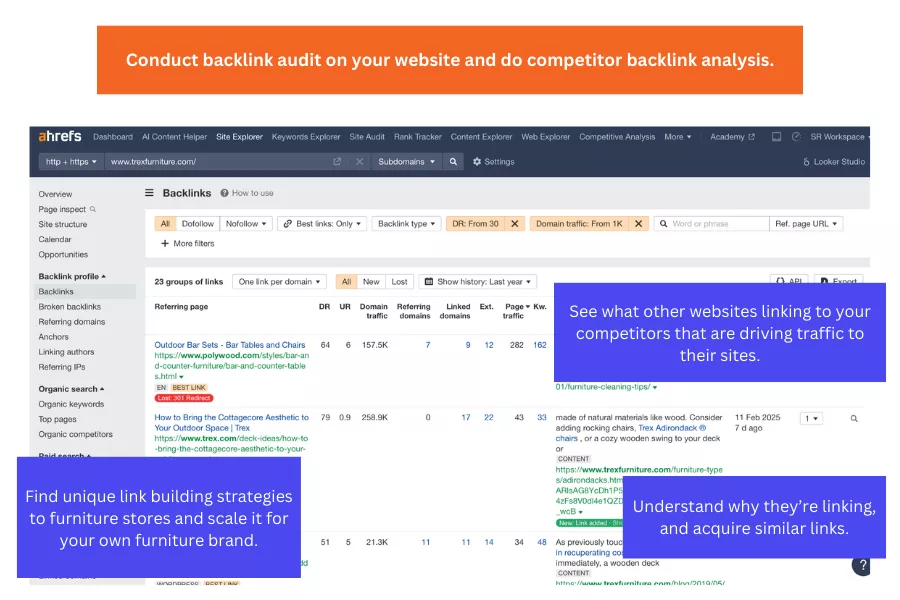
There are many scalable strategies, but the ones that truly fit the furniture space are the following:
Link Insertions
Instead of writing guest posts from scratch, you leverage existing web pages with high-traffic content (some already ranking) to acquire links. It's easier to scale this tactic than other link-building strategies, as it all demands to prospect for relevant blog articles.
Start link insertions by finding relevant home decor and lifestyle articles with existing traffic.
Reach out to site owners, suggesting your blog post or collection page that compliments their content.
Alternatively, you may offer content enhancement (sharing updated stats, expert quotes, and new insights) for a link to your category page.
Digital PR
High-level guest posting to get contextual backlinks on top-tier publications still works, but it requires solid authorship to penetrate the editorial guidelines of those niche blogs.
The best alternative is launching your digital PR campaigns. By providing expert commentaries on topics of interest by journalists, you're gaining traction, brand visibility, and backlinks straight to your homepage ("branded links"). Editors from Apartment Therapy, The Spruce, and Elle Decor are the best examples of top-tier publications that garner expert input from thought leaders—that could be you if you execute digital PR correctly.
Local SEO For Furniture Physical Stores
For furniture stores with brick-and-mortar locations, local SEO plays a big role in driving foot traffic, more local search visibility, and in-store conversions—for which online marketing strategies won't suffice.
Google prioritizes brands that optimize for "near me" searches through Google Business Profile optimization ranking for Google Maps and organic local search results listings.
There are several local SEO guides to get practical tips, but here are the top priorities for this matter:
- Claim and verify your Google Business Profile and make sure your business information is consistent and accurate, including your Business Name, Address, and Phone Number (NAP).
- Upload high-quality images showcasing storefronts, furniture collections, and showroom setups. This will entice more actual visits from your potential local customers.
- Include secondary categories to highlight expertise or more specific product offerings (e.g., "mattress store" or "office furniture store").
- Build local citations and legit directories with NAP consistency (Yelp, Houzz, Angi, BBB, Yellow Pages, and Local Chamber of Commerce).
- Incentivize or ask customers to leave Google reviews to improve local rankings and trust in your Google Business Profile. Engage by responding to every review.
For further readings, here are some of our extensive guides on doing local SEO:
SharpRocket—Agency of Choice For Furniture Stores
Book a strategy call with our CEO if you want to rank your category or collection pages for your furniture commercial keywords. We'll then show you a furniture SEO roadmap to increase your search traffic and organic revenue.
Furniture SEO FAQs
How Do I Advertise My Furniture Work?
To effectively advertise your furniture business, start with a combination of SEO, social media marketing, and targeted advertising.
- SEO (Search Engine Optimization) – Optimize your website and product pages to rank for relevant furniture keywords, driving organic traffic and long-term organic visibility.
- Social Media Marketing – Use Instagram, Pinterest, Facebook, and TikTok to showcase your furniture, post customer testimonials, and engage with potential buyers.
- Google & Facebook Ads – Run paid advertising campaigns targeting high-intent buyers searching for furniture. Invest $100 to $200 a day.
- Influencer & Affiliate Marketing – Partner with home decor bloggers and YouTubers to feature your products in home design content.
Who is the Target Audience for a Furniture Business?
Your target audience depends on the type of furniture you sell. Common customer segments include:
- Homeowners & Renters – Searching for sofas, beds, and home decor.Interior
- Designers & Home Decor Enthusiasts – Looking for custom, luxury, or trendy furniture.
- Businesses & Offices – Interested in office desks, ergonomic chairs, and workspace furniture.
- Property Developers & Realtors – Needing staging furniture for homes, apartments, or showrooms.
💡 Pro Tip: Use Google Analytics to track your website’s current visits & Facebook Audience Insights for your Facebook and Instagram Pages to refine your customer demographics.
What Keywords Are Best for Furniture SEO?
The best furniture SEO keywords include a mix of broad, long-tail, and local search terms, and are likely depend on your ideal customer profile, and business location. But here are few examples to help you generate ideas on your own.
Category-Based Keywords:
- Modern Sofas for Living Room
- Luxury Dining Tables for 6
- Ergonomic Office Chairs for Back Support
Long-Tail Buyer Intent Keywords:
- Best Sectional Sofa for Small Spaces
- Affordable Wooden Coffee Tables Under $500
- Outdoor Wicker Furniture Set with Fire Pit
Local SEO Keywords:
- Furniture Store in Los Angeles
- Custom Wood Furniture Near Me
- Best Office Furniture Supplier in Chicago
💡 Pro Tip: Use Ahrefs, SEMrush, or Google Keyword Planner to find high-converting, low-competition keywords.
How to Generate Leads for a Furniture Business?
Here are actionable tips to generate leads for your furniture business:
- Use Lead Magnets – Offer free design guides, exclusive discounts, or style consultations in exchange for emails.
- Optimize Google My Business (GMB) – Rank for local searches like “Best Custom Furniture Store Near Me”.
- Partner with Home Improvement & Real Estate Businesses – Cross-promote your furniture with interior designers, real estate agents, and Airbnb hosts.
- Encourage User-Generated Content (UGC) – Ask customers to share photos & reviews for social proof.
- Host In-Store or Virtual Events – Conduct home styling workshops or live product demos on social media.
💡 Pro Tip: Retarget website visitors with Facebook and Instagram ads to convert warm leads into buyers.
How to Use Expired Domains For SEO
Expired domains for SEO is one of the underrated techniques to acquire the strongest backlinks to your website.
It is a game-changing SEO strategy that landed me 29 DR60+ backlinks, including top news sites and niche publications like:
- NBC News
- Washingtonian
- Eater
- Daily Coffee News
In this guide, I’ll show you how to choose and vet expired domains and use them to improve your SEO performance.
Why Are Expired Domains Worth It?
Expired domains, in themselves, don’t have any value. What makes expired domains valuable for SEOs is the number of potent backlinks pointing to them (while the domain is still active).
By redirecting an expired domain to your website, you pass link equity to it, making the expired domain a powerful tool for gaining backlinks you wouldn’t get simply through manual outreach.
Quick Notes When Buying Expired Domains
Here are some of the things to remember when buying expired domains:
Buying expired domains is not a scalable strategy.
You can’t purchase and redirect expired domains for all SEO clients. It requires laborious manual work to determine whether a domain is worth acquiring based on its strong link profile.
Best to use this strategy for your own websites.
If you’re doing it for your niche sites, eCommerce, or agency, you have the luxury of testing the strategy. That said, if things break down, it’ll hurt, but not so much compared to if it’s a client’s SEO campaign you’ve tested on.
If you’re doing it for SEO clients, be transparent before executing the strategy.
Takes a lot of manual work.
You can’t shortcut the strategy by picking any expired domain that would benefit your site. Even if you have a budget to do so,
Reserve your resources, both time and money, on an expired domain that’s worth purchasing.
How to Use Expired Domains For SEO?
1. Find Relevant Domains at DropCatch.
While there are many other marketplaces for expired domains like Spamzilla, I use DropCatch for two reasons: less competition and lower bidding. This means I can choose and buy an expired domain at a lower cost than other marketplaces.
DropCatch works straightforwardly. When expired domains enter the DropCacth platform and have more than one backorder, they go into the public auction. The person with the highest bid at the end of the auction wins the domain.
Simply register and log in to DropCatch. Complete the details and wait for 2-3 days before you’ll be verified. You won’t be able to bid without a verified account.
Given I’d like to bid for a chosen domain, I reached out to their support team and asked for faster verification.
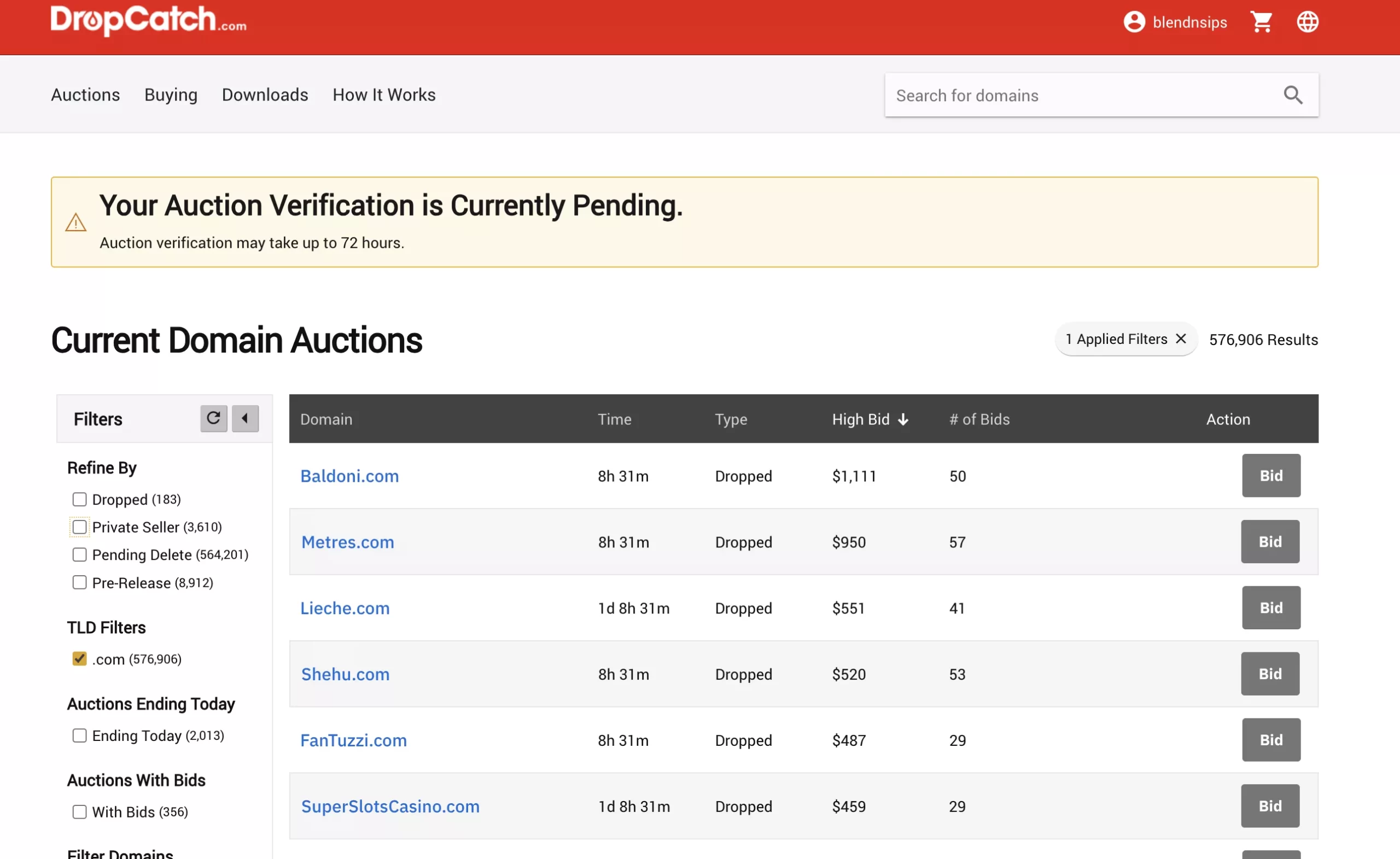
They accepted my request within a few hours.
Once you’re verified, you can now choose the dropped domain you want to bid on.
2. Qualify Expired Domains.
Click the Auctions tab, and you’ll see a list of current domain auctions.
I’d like to filter domains that are:
- Dropped
- .com
- Max of $150 (depends on your budget)
- Relevant to my site
- Branded domains
- From legit businesses
You’ll have to do a manual check for the last two criteria.
I want to enter a topic or keyword in the search bar to see if there are any relevant domains.
In my example, I searched for anything related to “cafe” or “coffee” and manually checked all these domains. That’s where I found RakoCoffee.
Check The Content History Of The Website
I used Archive.org to see what the business site looked like when it was still active.
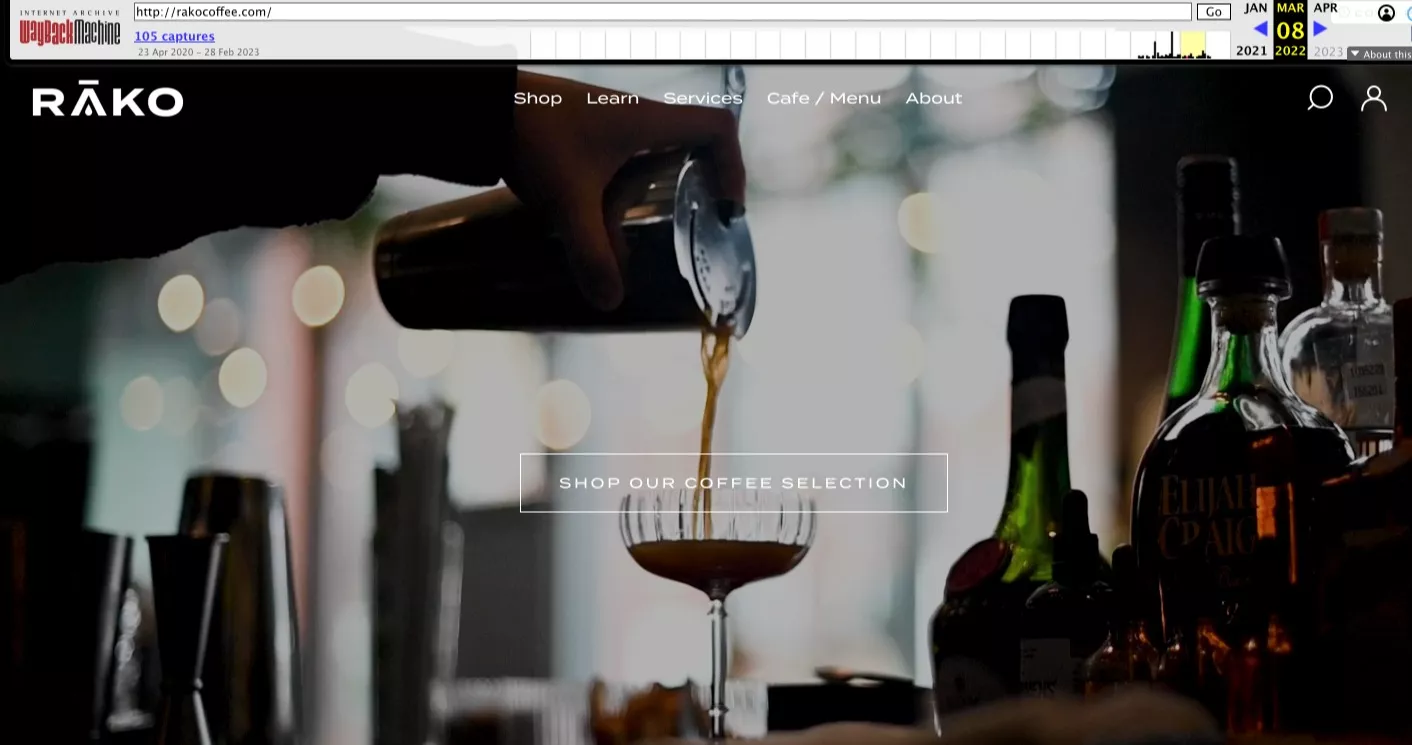
RakoCoffee is a coffee roaster and had multiple coffee shops, all of which were closed in November 2022 (unannounced to the public). Their website is an online shop where they sell coffee equipment and supplies, so we can say it’s a legitimate business.
The legitimacy of the businesses also helps you assess how they acquired their backlinks- either through brand recognition or being an authority in the niche - which, in turn, enables you to see how trustworthy those links are.
It is essential to look at the reasons why the domain expired. In this case, the business went out of business, so it would be safe to purchase the expired domain and redirect it to my website.
“A sign outside of Courthouse coffee shop Rāko says the espresso machine is out of order, but a reader sent these photos suggesting that the business owes money to Arlington County”.
3. Buy An Expired Domain Based On Its Potential Value.
This part is what you should be spending most of your minutes on, as you want to see if it’s worth buying the expired domain.
Enter the domain in Ahrefs - Backlinks Profile - Backlinks.
First, I’d like to see how many links are dofollow and from websites with a Domain Rating of 40 and above.
Filter the links by Dofollow and DR40.
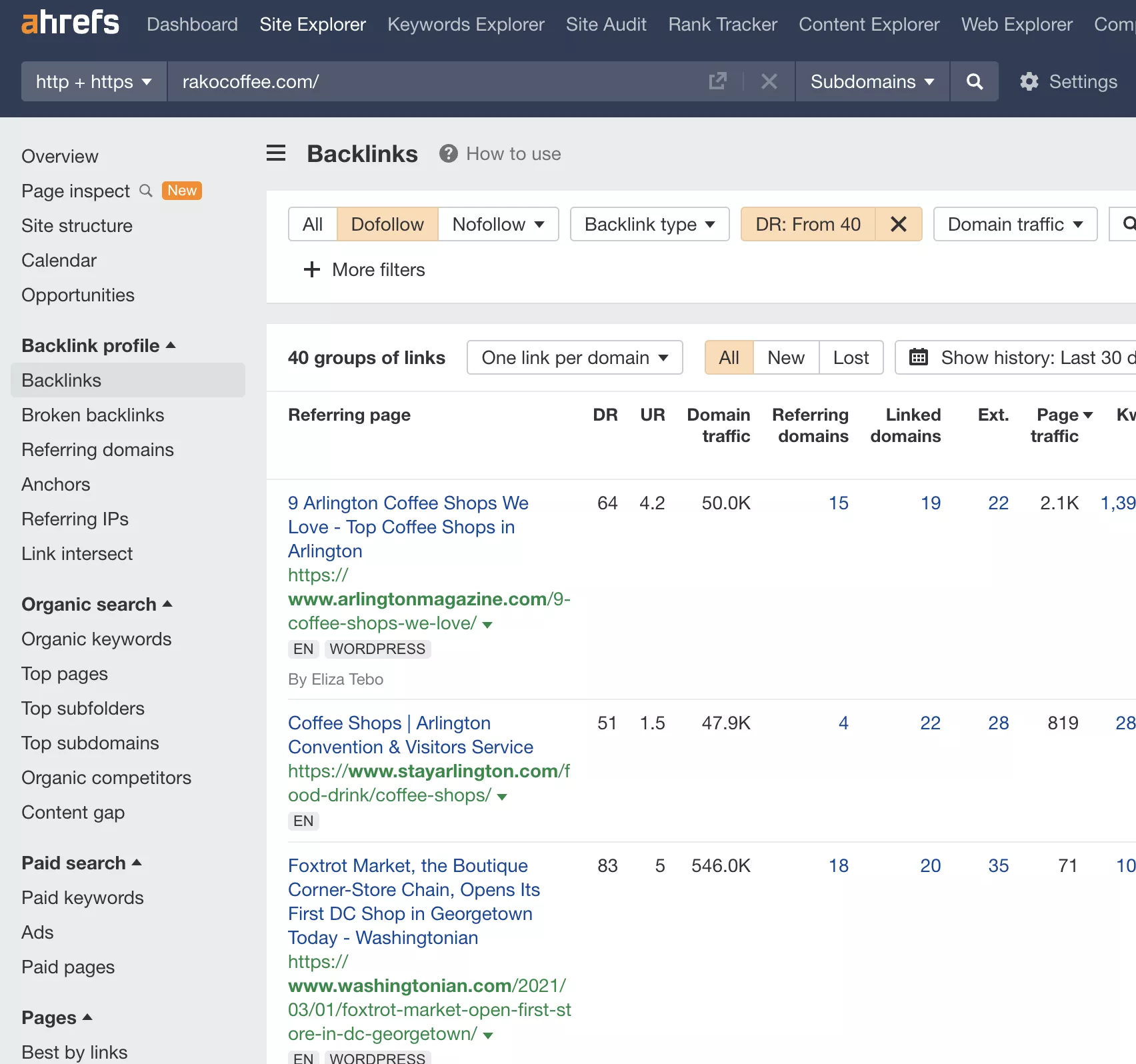
Manually check the links to see how they obtained it, as well as the type of links and anchor texts used.
The more natural the link buliding, the better these links are. They were not driven by any manual outreach (e.g., guest posting) but as a by-product of word-of-mouth marketing and brand recognition.
They’ve got high-caliber links from:
NBC Select (DR 91)
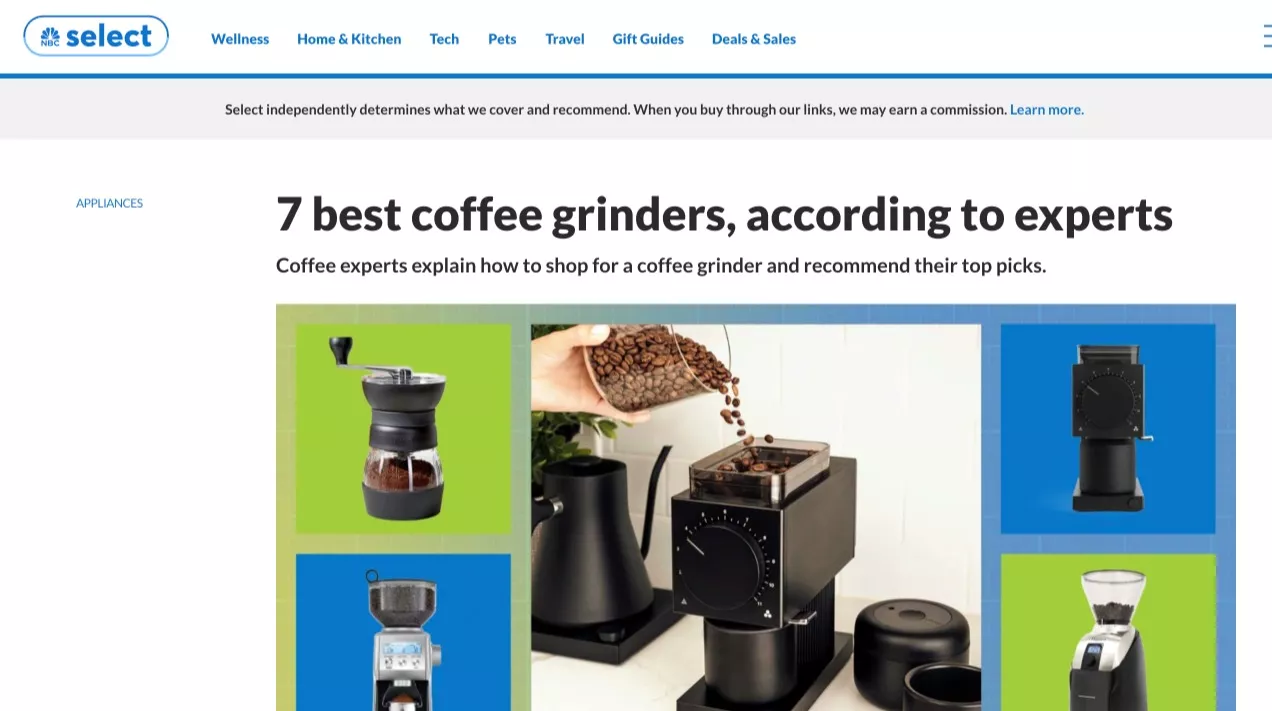
Washingtonian (DR 83)
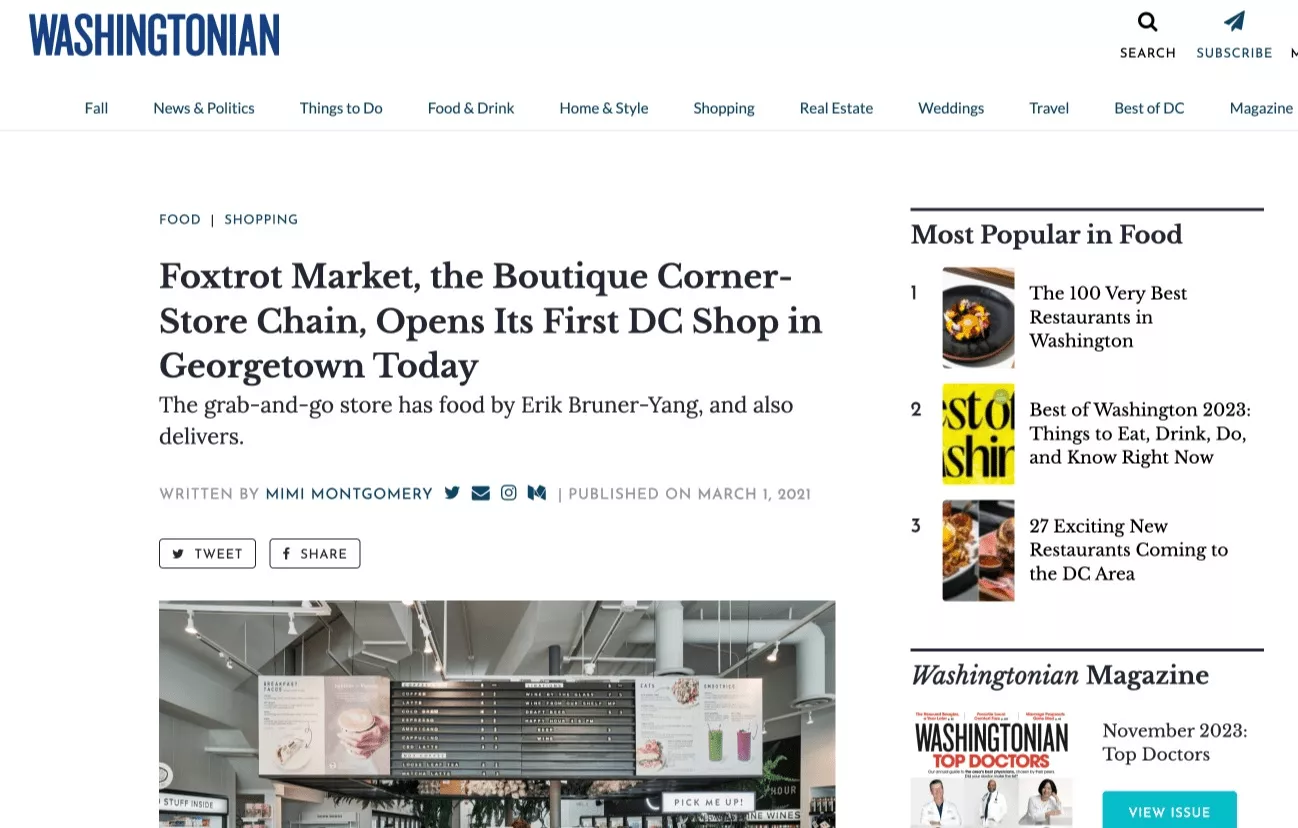
Eater (DR 90)
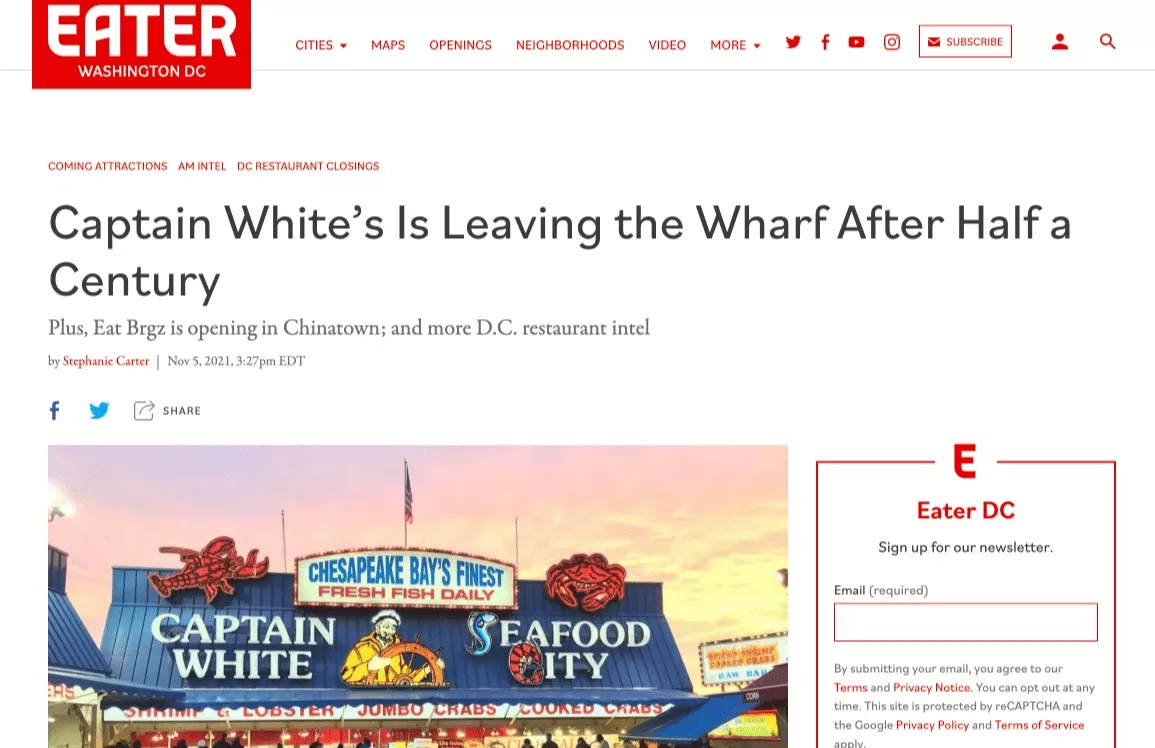
Daily Coffee News (DR 75)
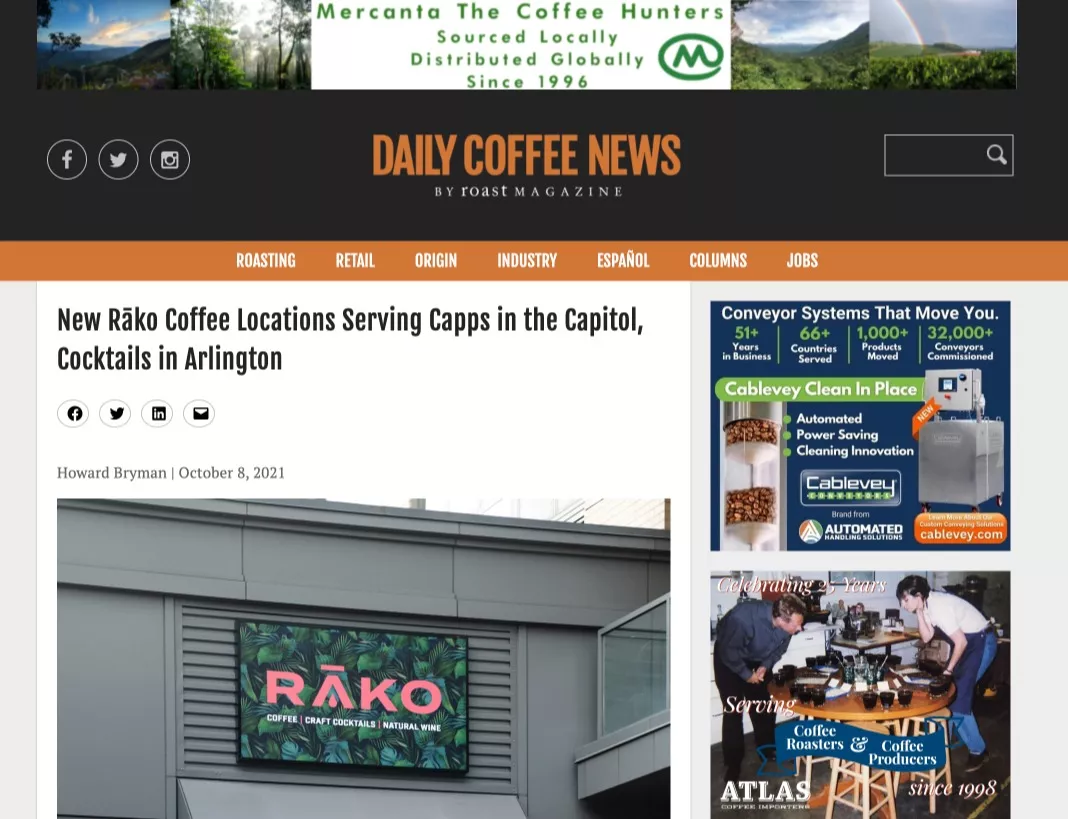
These links alone are worth more than $1,000. Digging deeper at the site’s link profile, it has 29 DR60+ backlinks.
A single DR60 link would cost manual outreach or content contribution of around $250 per link (conservative computation). These 29 links alone are worth $7,250.
This is a rough estimation, but what you want to see here is how valuable those links would be if you were to obtain them yourself.

I’ve purchased the expired domain for $69.
Here’s what it looks like when you win the auction and purchase the domain.
4. Redirect The Expired Domain To Your Website
The best way to redirect expired domains is to find suitable and similar pages for your site initially.
First, see what pages they got some quality links. These are priority pages you should successfully redirect to a similar (alternative) page on your website.
In my given example, their about/story pages are what a few top publications are mostly linked to.
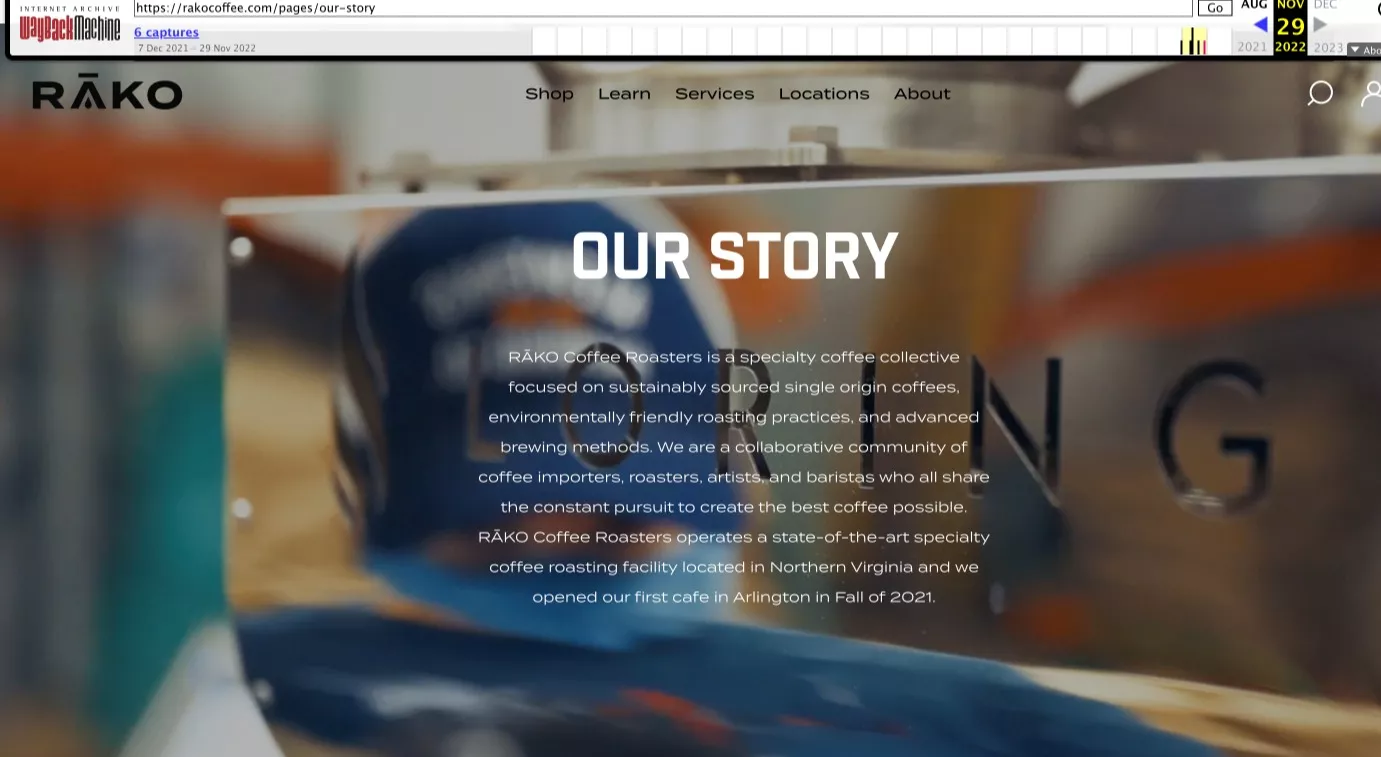
Given we have an about or story page at Blend N Sips, it became the destination page of our redirect. We could add a disclosure on the page where we bought the domain as a sign of courtesy.
If you can’t find relevant, suitable pages on your site, you can create an entirely new page that fits the old version of the expired domain.
So, what’s the impact of this expired domain link acquisition strategy?
I bought the expired domain on September 29, redirected the site on September 30, and helped improve the search performance of our online store.
Takeaways
That’s all I have for today. I showed you one way to purchase an expired domain for SEO from an underrated marketplace. Test it for yourself and see if it has a positive impact on your site.
What is Link Building?
What is link building?
Link building is the process of aqcuiring backlinks from other websites to your site.
It is often termed “Off-Page SEO” since both refer to the same thing – links. However, as the search algorithms evolve, link building should also complement other off-page elements, such as citations and sentiments, to improve the rankings of a specific webpage on search results.
Other Related Definitions
What is a link?
A link is a street between pages. When a visitor clicks a link on one page, he goes to another page. A link helps the visitor to go page after page.
Importance Of Link Building
Discovery
Search engines are using links to discover your pages. Newly built websites can be hard to find by search engines since there aren’t links built to them.
If you can build more links to your website, it will be easier for search engines to discover your website. Users can also find your website easily if one of your pages is linked to a relevant webpage.
Trust
Sixty percent of web pages are spam. To filter out spammy websites from high-quality ones, search engines use Trust Rank, a metric to measure the site's trust, which can be seen in its link graph. The higher the site’s Trust Rank score, the better.
You must earn links from universities, government websites, and non-profit organizations to boost your website's Trust Rank score. Reaching out to those websites would require some content resources for them to give you a link but worth the effort.
Authority
Pages with more high-quality links are said to be more authoritative. The more linked pages you have, the more chances that your site will become an authority in your niche. But remember that relevancy is more important than quantity. Even if several pages are linking to you, if they are not related to your website, then those links cannot contribute to your website’s authority.
Rank
Pages with more authoritative links tend to rank higher on search engine results than pages with fewer high-quality links. The higher the site’s ranking, the more traffic and potential customers it can earn.
Quality
A study shows that when a searcher clicks your page that is visible on a search result, he thinks the page is relevant to what he is searching for. Search engines see this activity and bring pages with higher click-through rates to the top of the search engine results pages (SERPs). Thus, if your page has a high *click-through rate (CTR), the likelihood of ranking your page on the top spots of SERPs is higher.
*Click-through rate is the percentage of people visiting a web page who access a hypertext link to a particular search result.
Conversion
Businesses care most about sales and other conversion goals (i.e., increase in email subscribers, social followers, etc..). When the website’s pages rank high on the search results for certain keywords, achieving conversions may be possible.
Thus, link building should be one of your top considerations if you want to grow your business.
Link Factors
Different factors contribute to the value that is attributed to a certain link. Let's discuss each of these important factors.
Anchor text
Anchor text is the visible, clickable text in a hyperlink.
Below is an example.
<a href="http://www.domain.com">Anchor text</a>
Best Practices:
- Use anchor text for users, not for search engines.
- Use the same anchor text only once in your post.
Surrounding Texts
These are the texts that are near a certain link. Let’s take one example.
“Learn about the key characteristics of animals, including multicellularity, eukaryotic cells, sexual reproduction, movement, and more”
In the above sentence, the anchor text is multicellularity, and surrounding texts are characteristics of animals, eukaryotic cells, sexual reproduction, movement, etc. This means all the phrases/words near multicellularity are considered as surrounding texts.
Google is now looking at the context of the page, the links, and all the surrounding texts near those links. This gives the search engines an idea of the theme/topic of the webpage.
If you’re using several terms that are related to your industry (e.g., animals, mammals, plants), then search engines will understand that your website is a biology blog.
Best Practices:
- Include industry terms that are useful to your post/page.
- Use surrounding texts that will best describe your link and will encourage users to click on it.
Location Of A Link
The location influences the value of a link. In this post written by Rand Fishkin about link valuation, he concluded, based on his tests, that links higher up in HTML Code cast more powerful votes. This means that a link from a higher location of the webpage is more valuable than a link from a lower portion.
The *primary reason why that experiment resulted in that conclusion is how search engines crawl web pages. Search engines crawl documents line-by-line, top-to-bottom. This is why they prefer links from higher page locations to those links from lower spots.
*That reason is based on my experience/knowledge about search.
Risks associated with the location of a link
Before discussing the risks associated with different link locations, let’s first define the two most popular kinds of links– contextual links and sitewide links.
Contextual links are usually found within the body of content and are in context with the idea surrounding the link. An example is a reference link within a post from another website.
Sitewide links - are links that are present on every page of a site. These links are often placed in the footer or sidebar of a site but they can be present anywhere. Examples are blogroll and footer links.
These two types of links have risks associated with them. Whether contextual or sitewide, you should be careful with every link you build for your website.
Both types of links should come from a website that is relevant to yours. Otherwise, those links wouldn’t add significant value to your website because of their lack of relevancy.
If you own a health insurance blog, then it is unnatural for you to get a link from a casino website. But let’s say you get sitewide links from several casino blogs. Remember again that sitewide links are present on every website page, which means that if you have 10 sitewide links, you can get 1000 actual links (i.e., if each website has 100 web pages). These irrelevant sitewide links could harm your website as you can get penalized by Google because of unnatural links (I will discuss this topic in detail in my next blog post).
Best Practices:
- Aim only for relevant backlinks. Remember that relevancy is a big factor in link building.
- Focus on getting contextual links more than sitewide links.
- Build a contextual link placed within the higher spot of the page.
Domain Authority
Domain Authority is Moz's calculated metric for how well a given domain will likely rank in Google's search results. The higher the linking website's DA (domain authority), the better.
When all other things are equal, getting a link from Wikipedia passes more authority than a link from DigitalPhilippines.net.
To identify a website's domain authority, you can use the Mozbar tool.
Best Practices:
- Use domain authority as one of your primary link metrics when looking for link opportunities.
- Focus on getting links from websites with high domain authority (e.g., educational and government websites).
Page authority
Page Authority is Moz's calculated metric for how well a given webpage will likely rank in Google.com's search results. The higher the linking page's PA (page authority), the better.
When all other things are equal, getting a link from PA 40+ resource page passes more authority than a link from a resource page that has PA 20+.
To identify the page authority of a website, you can use again the Mozbar tool.
Best Practices:
- Use page authority as a quality indicator for link opportunities from certain web pages.
- Get links from resource pages with higher page authority that are relevant to your content or to your website.
Methods Of Linking
There are two ways to link web pages: internal and external.
Internal linking is linking a webpage to other web pages on the same website. This helps search robots to easily crawl your website and is good for user navigation. Internal links are considered self votes because you can control them and associate any links with your desired keywords.
External linking is linking a webpage of one website to another webpage of another website. These are made to get attention to your website and increase the position of your webpage in the search results. External links can be either controlled or not depending on the link acquisition method that you choose. For example, if you do guest blogging, you can control the placement of your link and the term/phrase you will use as your anchor text.
You can use the do-follow or no-follow attributes when doing internal and external linking.
A do-follow link is a link that passes link juice to its destination page while no-follow doesn’t pass any value which is sometimes called a non-counting vote.
The default attribute of a link is do-follow.
The HTML of a do-follow link looks like this:
<a href=”http://www.domain.com/”>anchor text</a>
while a no-follow link has this HTML code:
<a href=”http://www.domain.com/” rel=”nofollow”>anchor text</a>
If you’re using a WordPress blog, then click the insert link button in your post management section (WordPress – Post) to interlink to your web pages. When you click the button, it will look something like this:
Insert the URL of your destination page in the URL box and put your desired anchor text in the Title box. Check the Open link in a new window/tab if you want the user to go to the destination page when he clicks on your link. Remember that the default scenario when the user clicks on your link is that he goes to the destination page, leaving the page he is currently visiting.
You can install this plugin if you want to use the no-follow attribute when you interlink your webpages. The plugin adds another feature to your link button. It looks like this:
Just click add rel-“nofollow” to link if you want to attribute the link with no-follow.
Moving on, let’s discuss a few basic link building concepts
Basic Link Building Concepts
Link Diversity
From the term itself, diversity, your links should be diversified into varied sources related to your content or pages. If your website only acquired one type of link (i.e., directory links), Google will notice that your link profile is manipulative or unnatural.
To keep your link portfolio from being manipulative, here are a few ways to help you diversify your link profile.
Different Types Of Links
Your link portfolio should consist of a variety of link types such that you will have links from at least one from each of the following sources:
- Resource pages
- Guest posts
- Press releases
- Forum boards
- Blog comments
- Q&A
Remember to become natural with acquiring these links since Google is looking at link diversity and the approach you use to get those links.
Associate your links with generic and branded keywords
There are two kinds of keywords: generic/non-branded and branded.
You want to rank for generic or non-branded keywords in the search engines. These are the terms that you want your brand to associate with. For instance, if you have a sports insurance blog, you want to associate your website with keywords like sports insurance resources and sports injuries.
Branded keywords are keywords associated with your brand. Normally these branded keywords occur late in the buying cycle, and are some of the highest value and highest converting keywords. So if you own the Wikipedia website, then your branded keywords may be Wikipedia.com, Wikipedia, Wikipedia articles.
If you want to have a diversified link profile, then those two kinds of keywords should appear in the anchor text section of your link portfolio.
Build links to your homepage and deep pages
Google can notice if you are only building links to your homepage. And if you do so, it signals a red flag to Google since a natural link profile should have links pointing to the website’s homepage and deep pages (blog posts, service pages, resources, etc..). If you're really providing useful content to your users, then you can earn links not only to your homepage but also to your deep pages.
Link velocity
Link velocity is the rate at which a specific website is gaining inbound links on a day-to-day basis. It is usually presented in a graph format by various link building tools like Ahrefs. And the link graph looks like this:
A normal link graph has several link spikes and drops. This means no indication of massive links acquired within a day. If this happens several times, then your link portfolio may look unnatural or manipulative in Google’s eyes.
Here is a link graph of an unnatural link profile:
The only way to have a natural link graph is to be natural with your approach in link building. Never use automated tools that will help you build massive links simultaneously.
Co-citation
Co-citation does not involve any outgoing links from one blog to another. Unlike the links with anchor texts, co-citation doesn’t need embedded words/phrases. To explain this further, here is a simple illustration by Haris Bacic.
This process points out the similarities found between two web pages based on a third-party webpage that mentions those first two webpages. Through co-citations, Google identifies the relationships between those two websites (Site A) and (Site B).
Co-occurrence
Co-occurrence refers to the proximity of two important keywords. Google understands the relationship and develops the association between those terms to determine the theme of your webpage.
Though co-occurrence doesn’t have a massive impact on your website’s performance on search results, it creates significant value for your website or business since you will be associated with terms that best describe your brand.
Link-Based Penalties
Link-based or unnatural link penalties happen when your website acquires links that seem manipulative in the eyes of Google. These penalties can decrease your pages’ search performance, meaning your pages will not be visible on search results. Thus, you will not receive any traffic from the search.
Google sends an unnatural link notification to your Google Webmasters Tool account if your website gets penalized by Google.
Once you receive the link notification, it is time for you to take the necessary actions to recover from the link penalty. This involves removing unnatural links through outreach and using GWT's Disavow tool.
To warn us of links that are against Google’s guidelines, they created a link schemes page on Google Webmasters website (link here). Here are a few examples of types of links that you shouldn’t be building for your website:
- Buying or selling links that pass PageRank.
- Excessive link exchanges
- Large-scale article marketing or guest posting campaigns with keyword-rich anchor text links
- Using automated programs or services to create links to your site
Check out the link I gave earlier to see the complete list of link schemes.
The Definitive Guide To Link Building Outreach
Outreach is one of the biggest parts of the job for link builders especially if they are just starting to build relationships with a few people in their respective industries.
As a matter of fact, in most link building campaigns, outreach consumes almost half of the time used for link building (probably because of the long inbox dialogue that happened before getting the link that they want).
I know you’ve read a lot of articles discussing how outreach should be done with care and personalization. You may have thought that the process is completely complicated in terms of the needed resources, link building tools, and time budgeted for this activity.
This boils down to one viewpoint: link builders are only for the persistent ones.
Well, there is nothing wrong with that. But in seeing outreach as a too-complicated activity in link building is not good thinking.
In this post, I want to share with you a simple guide on how you can effectively conduct your outreach campaign.
But before delving into the different steps used in this guide, let me give you some misconceptions about the outreach that I know many link builders are still thinking of right of this moment.
Misconceptions About Link Building Outreach
Lengthy emails are more likely to get higher response rates than shorter ones.
One factor that may cause an increase/decrease in the response rate is the length of the email.
Actually, there is no guarantee that a lengthy email yields a higher response rate than a shorter one. The number of words that must be used would mostly depend on the type of outreach you’re doing.
For product reviews, you might write a longer email since you need to explain the unique proposition of your product and use more words to entice your blogger to write a review about it.
While if you’re just sending an email to a person to let him see/share your content, you just need to be direct to the point and use 3 to 5 sentences to tell him your offer (since end-receivers in that kind of outreach don’t want to read fluffy words in their inbox).
The main point is that you shouldn’t care too much about the number of words that you will use in your emails. The more concise your email yet should be understandable, the better.
Outreach is all about personalization.
Personalization is only the first thing to consider in outreach. The next thing is authenticity. People are not always looking at the number of personal information that you know about them.
Don’t ask yourself, “how much information do I know about my prospect?”. But instead, answer this question, “How much do I care about my prospect?”.
People don’t care how much you know until they know how much you care. – J. Maxwell
Use reciprocation to your advantage. Offer your prospect something valuable that might interest him to do a favor for you (e.g. give you a link).
If you care about what he needs, he’ll be more likely to give you what you want.
Now you know some misconceptions about outreach, it’s time to understand the steps to a successful link building outreach.
How To Do Link Building Outreach
1. Goal Checking
You will not create again a list of goals for your link building campaign. You had this before, right? Now, you need to stick them into your mind while doing your outreach.
Remember that your link building goals should align with the operations of your business and should be more than just getting high quality backlinks. Check your list if the goals noted can bring success to your brand. Otherwise, make a revision with them.
Here are some goals that you’ve thought of when doing your link prospecting in the first place (and you know they can add value to your business):
Improve your online reputation management (ORM)
All brands want to impress their clients/customers as much as possible. Unfortunately, this doesn’t happen only by creating good and high-quality content targeted for its target audience. Your content must be seen by them in any way that you can (exert more effort on relationship building to get better results).
How can they see your content? Through outreach.
Unlike PPC ads and other paid marketing efforts, outreach is a free-to-use method to get your content in front of your audience and let them take an action for your brand (i.e. sign up for your newsletter).
Outreach tactics to improve your ORM:
- Content distribution to influential bloggers/webmasters (e.g. guest posts)
- Participation in industry-related communities (e.g. forum marketing)
- Pitch bloggers who do weekly/monthly interviews and ask if they can include your content assets.
- Find journalists and tell them your brand stories (use Followerwonk to search for them).
Increase in referral traffic
Link building is useless if it doesn’t add traffic to your site. It may seem good to see one link in your backlink profile but if it doesn’t give your site new visitors, then you are not squeezing the most value out of your link building efforts.
Outreach is your first initiative to increase your site’s referral traffic.
You let your prospects identify your requests (i.e. content placement) and why you are worthy for such. If they accept your requests, you can submit your content and get a link from that effort (contextual links from your guest post or from an introductory paragraph of your infographic).
And from the proper placement of your link, you can receive referral traffic from your prospect’s page/site.
Outreach tactics to increase your online traffic
- Ongoing content distribution to high-quality media outlets (e.g. regular content contribution)
- Engagement in industry-related conversations that are mostly found in community threads
- Massive interviews (pitching bloggers who have an interview section on their blogs and incentivizing them to conduct an interview with you)
- Build expertise-based relationships with key influencers in the industry (to get natural links that can bring new followers/visitors to your site).
Rank for competitive and highly convertible keywords
Having your content placed on the top five spots of search results for targeted keywords could bring continuous search traffic to your website. If targeted keywords have high conversion rates (i.e. buying keywords), an increase in leads/sales is possible as well (conversion link building).
Outreach tactics to rank for competitive and highly convertible keywords
- Increase in content promotion efforts with variations of targeted anchor texts for higher chances of ranking for related terms.
- Conversation participation in online communities (target keyword-based online communities – i.e. forums that have your target keywords in the threads’ titles).
- Pitching site owners that have links pages (placing your link in the page through broken link building and/or paid methods).
- Reaching out to social sharers of a successful existing content (asking them to also promote your content asset).
Enhance branding and market awareness
Online presence targeted to customers is the first reason why brands go online. When people search for a product/service to use, they want their offerings to be seen on different web places where their customers are actively participating (forums, blogs, Q&A sites, etc..).
Outreach makes this branding effort a lot easier since you only need to reach out to a few people who are influential in your niche which can speed up the process of your brand promotion (the higher is their engagement, the faster is the amplification).
Outreach tactics to enhance branding and market awareness
- Pitch bloggers who write high-quality product reviews (incentivize them by giving a free trial of the product, payment, or both).
- Get journalists to cover stories/news about the new developments of your brand.
- Sending emails to authoritative media outlets who’re seeking insights/knowledge from key influencers (include your personal or your brand’s achievements to secure a higher response rate).
- Continuous engagement in web places where the target audience participates.
2. Information Gathering
You need two things before you gather the needed information of your link prospects:
- List of identified link building goals in your notepad/word document with corresponding actionable tactics to achieve each goal.
- Spreadsheet of qualified link prospects (approved by your SEO manager/link building specialist).
When you now have these two lists, proceed to information gathering. Information gathering is simply the process of finding the important contact details of the must-pitch/approved link target.
Below are the details that you need to look for each link prospect:
- First name (with credentials such as Dr. to address the person ethically)
- Email address (methods to find this will be discussed later)
- Company position of the link prospect (optional)
If you come across a website that has only one website owner, it is easy for you to see his contact details by simply looking at the About Me page.
However, for several owners/persons of one website, you have several contact details to choose from. In this case, you need only to select one or two from the list and have his/her contact info placed on your spreadsheet. But how?
Go back to your link building tactics list and identify the person you need to contact for each link building tactic.
- Guest posts – blog/content manager
- Product reviews – content manager
- Interviews – specific staff member or the site owner (if not available, find the closest person of your interviewee and just ask him if he can direct you to your target person)
- Round-up posts – blog manager
- Get people to see your content – blog manager, social media manager
- Contest – page creator (when there’s a page for event inquiries)
- Event resources - event manager, support system person,
- Discounts/coupons – content manager
- Broken link building – page creator, original webmaster,
If you can’t find the right person to pitch for your link building activity, look for the last resort – support system manager. Commonly his email address would be info@domain.com or support@domain.com. Make sure you ask for permission/request to him to help you connect with your prospect.
Now that you have identified the right person to get in touch with, you can now find all the important details of that person.
First Name
There is no need to explain this further. But if you’re doing link building for commercial websites, you have to include the credentials of your link target (i.e. Dr. if he is a doctor).
I discovered that this is important since the person would want to address properly his name either by phone or via email.
Here are the places where you can find the email address of your link prospect:
- Contact Us Page. Look at the different sides of the homepage (top, bottom, sidebars) to find a link pointing to the contact us page.
- Contact Form. Find the email ad at the top of the contact form (somewhere in the description/paragraph above it).
- Employee Bio Page. For prominent brands, there might be a bio page for each of the brand’s staff members or employees. If you can’t find your prospect’s bio page, search for his personal blog/site (it may have been stated in the bio page, then find his email address on his own website).
- Google search. Use this query: site:domain.com @gmail.com OR [at] [dot] to see his email address in the search results.
- Linsy.me with Rapportive. Type in the name and/or the site of your link prospect in Linsy.me and place each and/or all of the email addresses in your email message (see the image below). Make sure you install Rapportive in your Gmail account to ensure that he is the right person you’re looking for.
I also recommend using Buzzstream or Citation Labs Contact Finder for easy identification of email addresses.
Company position of the link prospect
You can add this detail to your email to make your message more personalized, knowing that this can catch the interest of your link target (since you’ve done a little bit of research to get that small personal detail).
3. Segmentation
Before doing outreach, I categorize all my contacts based on the link-based metrics (i.e. DA) I’ve pulled out for each of my link prospects. This will help me prioritize my list of contacts as to which of them should I first reach out to.
The three categories that I used in this phase are:
High – Create the most customized outreach email. Offer an additional value to your pitch. For instance, you want the blogger to write a review about your product, you may want to add another offering (i.e. monetary value) to ensure a positive response.
Medium – Use a template that needs only revision in its intro paragraph. Include details on how you landed on the website of your link prospect.
Low - Use a standardized template to scale your outreach. The template must only require little to no revision.
Add a column to your spreadsheet for contact segmentation. Then proceed to create outreach templates for the two categories (medium, low).
4. Outreach Template
For your first category (High), you might not need an email template since you will write highly customized emails for each of your link targets.
However, for the other two categories, you want to have an outreach template to speed up the process (especially if you’re reaching out to 500 to thousands of contacts).
There are three outreach principles that I always keep in mind when I create an email template:
- Offering. What do you offer to your link target? Is it free content? Product or service? Sponsorship? This must be the first thing your link target must be able to see at the top of your message.
- Unique Proposition. How different is your offer from other offers? If you’re providing the same value then why would they bother to reply back to you?
- Call to Action. The end of your email template should get your prospect to take any action (give you feedback, answer your question, etc..). Be careful not to ask immediately for a link. It will just decrease your success/response rate.
The basic formula to create an outreach template is this (from SEER Interactive’s post):
[Asset] for [Blog/Website Name]
Hi [First Name],
[Brand] [thing brand is offering]. [CTA].
Thanks,
[Your Name
So if you’re outreaching someone for a guest post, your email template may look like this:
Subject: [New Content / Guest Post] for [Blog/Website Name]
Hi [First Name],
[Brand] would like to contribute an article about [topic]. Is this something you’d be interested in?
Thanks,
[Your Name]
Add variations to your email template to create multiple templates and test which one is the most effective. For instance, you want to test the best place to put your CTA offer.
In this case, you can create two templates: one template includes CTA in the intro paragraph; the other one has the CTA at its end.
The more you do testing, the more you improve your outreach.
Real Life Email Outreach Templates
Guest Post
Hey [First Name],
I saw that you’re the founder at [Site] and I wanted to get in touch.
I am looking to write about the topic "[topic]".
[Why do you want to write about that subject?]
I'm sure that this topic would catch the interest of your readers.
What do you think about this? If you’re interested, I am happy to get something written up and sent over to you – or if you have another topic you’d like to see covered, I am more than happy to write on that.
Here are some of my posts I've written on other blogs:
[URL 1]
[URL 2]
[URL 3]
Thanks,
[Your Name]
Results:
Response rate 79%: (11/14)
Links acquired: 11+ (with 2nd-tier links for this post)
Sample links:
- Guest post for Cognitive SEO (DA 50)
- Guest post for Raven Tools (DA 73)
- Guest post for Site Beginner (DA 41)
Round-Up Post
Hi [First Name],
I'm doing an expert round-up on my site and I know that many people would love to hear your thoughts to this question:
[Question]
You can include images (e.g. screenshots) and videos to support your idea.
I know that this will be a great resource for [industry] today. That's why I want to include your tip (since you've been sharing useful strategies/tactics about [topic] on [Site]).
Thank you for your answer in advance, [First Name].
Kindest regards,
[Your Name]
Results:
Response rate: 52% (51/99)
Links acquired (linking to this round-up post): 8+
Sample links:
- Search Engine Land (DA 92)
- Zen Optimise’s Weekly Optimizer (DA 35)
- Wow Internet’s Weekly Round-up (DA 42)
5. Execution
Now it’s time for you to do the outreach. Here are some tools that you can use for the execution phase:
- Gmail with Undo, Boomerang, and/or Yesware add-ons.
- Buzzstream (freemium)
- Marketo Sales Connect (freemium)
Among these tools, I personally use Gmail since I find it convenient and easy to use. However, Gmail and other email service providers can limit your outreach efforts such as handling multiple inbox dialogues and tracking responses from link targets.
If you are tight on your budget, you can consider Gmail and Excel spreadsheets as your outreach tools.
Here are a few tips to get the most value out of the said tools:
- Use canned responses in Gmail for easy template creation. You can even include your subject line in your email template so you can just copy and paste it in the subject line once you write the draft or send the message already (this is effective if you have long subject lines).
- Install the Undo tool in Gmail so you can easily undo the message if you still don’t want to send it (i.e. you remember some grammatical errors in the message).
- Use split testing in outreach. Create two different email templates (you add variations to their subject lines). Send an email message to the first 10% of your contacts. Send another one to the other 10%. Wait for 1-2 days for their responses. If they don’t respond, check each of your templates and see which details you can improve to get more replies. Select one from the two templates that get the most response and use it to reach out to the remaining 80% of your link prospects.
Here’s a diagram to help you with split testing:
Track the dates when the person replies back to you and when the link goes live. It will give you an idea of which week/month gets higher response rates (i.e. December is not a good season for outreach since most (all) are busy for the celebration).
- Allot one week of the interval before you follow up on your contacts. Check first their pages/sites if they had linked to you already. They might forget only to tell you your live links.
- Continue to build relationships with your prospects. You might get another link from them in the future (if you need be).
6. Reporting
If you can measure it, you can improve it. This saying is always applicable in outreach. After you send out messages to your target linkers, you have to track the response rate and the number of links you acquired from them for the following reasons:
- You can have a better understanding of which template gets the most response and certainly add/change details to the template to get better results.
- You can estimate your industry’s link acquisition rate for a certain portion of contacts (2% rate for the first 10% of the whole list).
- You can determine which day of the week yields the highest results in outreach.
There are still a lot more reasons why you need reporting in link building outreach. But the above reasons are what you need the most to improve your outreach efforts.
To simplify the reporting, I created a tool that will help link builders (including me) to measure the success that we’re doing in the outreach process.
Link Building Outreach - Reporting Spreadsheet
As you can see, I applied split testing in the execution and reporting phases of the outreach.
You can easily track the success rates for the first split (10%), second split (10%), and last split (80%) of the activity. You just need to put the important details in the spreadsheet:
- URL of your link target (page/site)
- Name of your link target
- Yes/No for the response section
- Yes/No if you get a link from the prospect
- URL of links that you acquired
The tool will automatically count the response rate and a number of links that are lived for each outreach split.
The spreadsheet could also give you visual representations of the number of links and percentage of responses for a part of the whole portion of your list of contacts.
I will update this tool in the future to track and analyze more needed details in outreach.
How to Build Links Using Directories
Directory link building is one of the initial link building techniques that you can execute to add a little boost to your site’s link portfolio, to increase your relevancy signals and to get people find your brand/site on the web.
Generally, there are a lot of discussions about directories whether or not they could still add value to a website’s ranking potential and if there are any high quality directories still exist today. Let’s dig deeper into each discussion and hopefully, I could provide insights to all of these questions/boards.
Let’s get started.
Directories are still good to consider in link building for the following reasons:
- Customers still use them to find services/products within a specific city/area and if you are listed in a directory, you have chances of getting found by your target clients/customers.
- Getting links from them are easy wins in link building. If you’re working with clients, a list of 15 or 20 directory links could add some details to your weekly SEO reports (earning some trust from your client).
- Earning citations from local directories sends more signals to Google that your website is tagged or categorized to a specific niche/industry.
Now, you decide whether or not you want to continue building links using directories but the mere fact, it doesn't hurt your website at all (when done in a non-aggressive way) is a good thing to consider for your site’s backlink profile.
Quality Factors to Consider in Directory Link Building
With tons of directories out there, you have to separate the wheat from the chaffs to choose only the best directories that you want to submit your website.
Here are a few factors that I consider when qualifying a specific directory:
- Domain age – with the use of webarchive, you’ll see the year and date the directory has been bought. Though in most cases old directories had been spammed, there are still a few of them that remain high quality.
- Editorial review/discretion – you can look at the policy standard/submission pages of the directory site and see how much time they would need to review each website. If they don’t have strict editorial guidelines, they’re more likely to be automated directories.
- Lists down top brands/companies – you can grab one popular company website and search for it in the directory. See if it pops up and the category, tags and descriptions fits right to the company.
- Relevancy – Look for closely related directories that don’t have any submission from adult and gambling sites or any bad neighborhoods.
- Number of listed websites – the faster they list websites, the higher chances that they don’t have strict review guidelines (unless they existed for a long time and are ranking for many directory terms).
- Anchor texts used to link to submitted websites. If the directory links out to websites using exact match commercial keywords (e.g. personal injury firm in UK, personal injury firm in Florida), then it’s more likely deemed as a low quality one.
Types of Directories
There are three types of directories that you can find on the web. They are:
- Niche-specific. These are directories that only accept submissions from websites in the same industry/category (e.g. legal services)
- Blog. These directories would only accept blogs as part of their listings.
- Local. These directories accept submissions from sites located within the same city/country (usually with the same top-level domain – TLD).
Actionable Tips to Build Links with Directories
Reverse Engineer to Find High Quality Directories
A great way to find closely-related and quality directories is reverse engineering. For each type of directory, you can apply reverse engineering by simply grabbing the URL of a target website and discovering its inbound links using Ahrefs.
Search for one website that is ranking for a targeted keyword. You can use queries like:
- “your industry” blog (e.g. “personal injury” blog)
- “your industry” city (e.g. “personal injury” Texas)
- “your company” (e.g. “personal injury firm”)
List down all the websites in a spreadsheet and filter out low quality ones based on the metrics I mentioned above. Discover links pointing to them using Ahrefs. You can find and replace terms to quickly look for directories (i.e. using terms like directory, personal injury)
Tip: You can search for more directories by grabbing one website listed in a directory and doing a reverse engineering on that site.
Pay for Editorial Value
Maybe, you’re asking if this is considered as a paid link?
Matt Cutts answered this question. If you’re paying for editorial value in which the editor reviews the quality and relevance of a submitted website, then it’s okay to pay for the directory. However, if you’re paying for low quality and automated directories or you are given the option to choose the anchor text used to link to your site, then you should worry about submitting your website to those automated directories.
Spend a little amount of your SEO budget to these directories. Focus more on the usability, site architecture and design of your website. Invest in your content and make it useful to your audience. This investment is more beneficial than just spending money for easy directory links.
Earn citations from local directories
Citation building is known these days because of the value that it provides to a specific brand/website. Aside from getting listed in the directory and helping your customers to find you, you’re giving Google and other search engines relevancy signals that will make your website rank for local terms/keywords.
In submitting your business to local citations and directories, you have to remember that when you submit details of your brand, they should be all be the same on all directories. Be consistent with your NAP (Name, Address, Phone number) details so that Google will understand better about your website and help you rank on local search results.
You can check out this post by Richard Marriott to find more link opportunities in the local scene.
To help you save time in finding local citations and directories, I created a spreadsheet that lists down submission sites where you can add/submit your business, only for UK, US and Australia brands.
[sociallocker id="2245"] [/sociallocker]
Perform a Manual Citation Auditing
If there are changes with your NAP and other business details, you have to consider editing your past details existed in your directories. This is the most common problem most local search professionals encounter. And thanks to Andrew Shotland. He just created N.A.P. Hunter Life, a local SEO tool that will help us track our existing local citations and directories (it will be available on Google Chrome Store soon).
This tool will speed up the process of auditing your existing local citations. Manual citation auditing happens when the brand needs to add or edit N.A.P and other important details about the business.
N.A.P. Hunter Lite will automatically export NAP suspects in a spreadsheet file which will save time in gathering all the links.
Note: The tool will not keep your logins so you really have to document the username and passwords that you use for local citations/directories for you to be able to do some changes when you need so.
Reminder:
Diversify your link portfolio. Never put all your eggs in one basket. Directory link building should only be part of your initial link building strategy as you take time to plan creating linkable assets, fixing technical issues and performing link audit on your website.
If you liked this post, you can subscribe to this blog or follow me on Twitter and Google+.
Image Source: 1
11 Link Earning Strategies to Spice Your Content Marketing
This is a guest entry by Roel Manarang, the founder and CEO of North Social Media, a Philippine-based social media marketing company. He is also the author of Shoot Forth, an Internet marketing strategy blog. You may follow him on Twitter.
Link earning has been a core factor to a successful content marketing and is an effective way to increase search engine rankings on a long term basis. Many content marketers will totally agree that creating exceptional and useful content can help you earn links. Surely, best content marketing practices do earn links.
Producing top-notch content can help other publishers recognize it and generate links, which increases your site's ranking signals. However, it requires that the content should be easy to understand and consume by the users so that it can be distributed appropriately to other interested audience.
This article will help you create specific, exceptional, and useful content assets that can easily help you earn links to your site, as if they’re the power enhancer steroids.
1. Infographics
Because most people love images nowadays, one of the best content pieces that publishers can create is infographics. According to AnsonAlex, publishers who use infographics grow in traffic 12% faster than those who don’t.
Let’s take a look at Anna Viral Infographics. It has been published on Entrepreneur.com and received not just a link back to her site but also generate more than 21,000 social shares.
Making your infographics useful and easy to share using embed codes can help you earn backlinks back to your website.
To get started with creating infographics, you can use Picktochart or Visual.ly.
2. Contest
Creating contest allows you to provoke your audience to share and enter yourwebsite.
People love joining contests especially if they are loyal fans or readers. This strategy is very effective on producing organic links. All you need to do is create a contest (of course with prizes and giveaways) on your website and/or on social media platform and promote it. The more people see and share your promotion, the more links it produces.
Here’s one example of a contest that Spielgaben, which is one of my clients, has done.
We used Rafflecopter to create and launch their giveaway promotions. This increased their referring trafic and links and improved their branding campaign and conversions.
3. Social Sharing
Since social signals impact search engine rankings, it is just important to have links from social networking sites. Integrating social sharing buttons on your website allows your audience to easily share your content which later, can produce links.
Here are some of the social media plug-ins for WordPress that I personally use:
- For Post and Pages
o AddThis (free/upgradable)
o Digg Digg (free/upgradable)
o Social Deux (paid)
- For Images
o WP Easy Social Hover (paid)
In case you are not convinced on using social sharing buttons for gathering links, you may want to consider some social media marketing statistics that provide you more than just one benefit (links).
4. Researches, White Papers, and Analyses
A result-driven marketing blog like I have that produces evidence-based content pieces links out to a lot of statistics, academic researches, case studies, and analyses. This makes my articles deserved to be linked to from other blogs.
When you linked to data-driven pieces (pdfs, reports, statistics), it provides you great benefits such as an additional credibility to your posts. It also supports your personal insights about the topic.
5. Free Resources and Guides
Almost everyone loves free resources as long as they are answers to one’s needs. Depending on what type of resources you want to produce, the difficulty on creating this type of content ranges from easy to difficult level.
A few great examples to look at are Quicksprout and Heidi Cohen’s resource pages, which have different approaches on how they create their layout depending on their goals and styles. Huge thumbs-up to their sharing buttons that makes sharing easy.
6. Tools
Smart marketers love to recommend a tool that they use especially if they think that it will be helpful to their audience and get them to take action.
Take a look at Google Analytics and Yoast SEO Plugin for WordPress. Since these tools are very helpful to their target industry and many of their audience leverage from them, most of their users link back to their product pages and/or recommend them to their networks. You can check out this list of SEO tools by Linkio.
7. Quizzes
Creating quizzes helps you drive social traffic and earn links easily. Using tools such as Qzzr provides you even better feature such as capturing leads and more.
BuzzFeed, Kissmetrics, and Moz, just to name a few, use quizzes not only to earn links from either social media or websites but also to engage and increase branding awareness.
8. Memes
Memes are easy to create images that have a lot of viral potential. Creating memes has become one of the fastest growing trends years ago, which many companies still use today.
They are great for inbound marketing to create easy wins, to generate content that their users will love, and to build their brand and engagement. Fact is website like 9Gag that has become popular in earning links, social shares, and engagements simply by just producing memes.
There are free online tools like Canva, Meme Generator and Quickmeme that allow you to create meme in just a few seconds even without designing knowledge. But when you have a knowledge of using advanced tools like Adobe Photoshop, it can help you create more customized memes for your content marketing.
9. Quotes
Thought leaders who offer quotes and insights about a certain topic enchances their personal branding and enable them to earn links for their websites from those who featured their quotes. The best way to easily share quotes is by embedding them or by putting an easy share button.
An example is Noah Kagan’s best quote page, which features an embed code with a link back to his site.
10. Controversial Post
Remember those controversial articles that you shared, linked to, and provided some insights because you just can’t resist it? This type of post promotes critical thinking, education, and information.
Controversial post can fall into different categories such as education, politics, religion, health, money, and more.
If you want to publish controversial posts, you should be careful though and try not to annoy or offend your loyal readers.
11. E-books
An e-book is a great tool not just to promote your website but also to build authority or influence in your community. It is a powerful tool that naturally attracts discussion and reviews about your website/brand.
Ranking your e-book and getting a lot of exposure is a sure way to earn links and increase your sales. Another good thing is that bloggers can contact you for interviews which can result to new relationships and links.
Conclusion
Link earning surely is easier to be said than to be done. It is way harder than building links for your audience.
You need to consider that earning links are not limited to just creating exceptional and useful content. Relationship building and partnerships are just few of the other things that you can do.
Do you have strategies that are not on this list, that you use for your content marketing efforts and help you earn links? Feel free to comment below or let me know on Twitter.
Image Source: 1
If you liked this post, you can subscribe to this blog and follow Roel on Shoot Forth.
Persona-Based Guest Blogging: How to Guest Blog Like a Pro
Aside from being the most common link building tactic (as stated in the last year’s link building survey on Moz), guest blogging serves as a traffic generator that continually brings targeted visitors to a certain website which can help the brand grow a small but engaging community.
The main key to generate targeted traffic, leads and sales through guest blogging is the use of personas. With persona in mind, third-party content (guest posts) are more appealing to its audience given that the value/information provided by the content appeals to the deepest needs and/or pains of a specific group of people.
In this post, I’ll be discussing how to create and use personas in guest blogging to maximize every effort and time devoted to writing and distributing the content.
How to Create a Persona
In user-centered design and marketing, personas are fictional characters created to represent the different user types that might use a site, brand, or product in a similar way. This is essential in capturing attention from a specific group of people given that the interest, need and/or pain is identified, solved or attended by the content piece.
The first initiative in creating a persona is to identify the audience that the business wants to engage with. This may be the direct customers and/or those people that would help promote the business online.
To identify the direct customers/clients, you could simply get an idea from the unique selling point or features of your product/service. So for instance, if you’re selling an online point of sale (POS) system, your direct customers could be product retailers and ecommerce site owners.
Features
Customers
To identify your brand evangelists, you can look at those people who’ve shared your content in the past or if you’re new in the business, you can reverse engineer on your competitors’ social profiles. See the descriptions of those social followers and determine their niches.
Once you have identified your target audience (whether it is your direct customers or brand evangelists), you can now create a persona by adding important details such as:
- Name
- Age
- Location
- Job Title
- Interest
- Needs
You can create a cartoon to get a visual look of your persona.
How to Guest Blog like A Pro
Prospecting
Like any other link building techniques, guest blogging starts with the right link prospecting.
When prospecting for blog targets, you only want to find relevant blogs (where your audience is engaging) and have high potentials of bringing to your site a consistent traffic once you landed guest posts on them.
In terms of relevancy, there are three prospecting categories that I usually follow in guest blogging: horizontal, vertical and local-centric. These categories are based on relevancy and geographic locations.
Here are three diagrams to explain each category:
(Let’s take sports insurance as our niche example).
Horizontal Category
Vertical Category
Local Centric
 When you determined the category of your choice, you can now proceed to finding relevant and high quality blogs. Here are some tips in looking for high quality niche-specific blogs:
When you determined the category of your choice, you can now proceed to finding relevant and high quality blogs. Here are some tips in looking for high quality niche-specific blogs:
- Use author footprints to discover guest contributions written by an industry blogger. If the blogger is highly influential, chances are those guest blogs where he had contributed his posts have strong readerships and solid blog communities. You can try using Buzzsumo to find guest articles of an influential blogger.
- Maximize the power of directories by using it to search for high quality blogs from horizontal and vertical categories of your industry. Blogs listed in directories like Dmoz are said to be of high quality given that those kinds of directorieshave strict guidelines in listing websites.
- Utilize contributor queries in prospecting for guest blogs instead of using generic search queries such as inurl:submit a post [industry] or “write for us” [industry]. Here are a few queries that you can add to your prospecting query list:
“become a contributor” [industry]
inurl:contributors [industry]
To discover more guest blogging opportunities using free tools, you can check out this post on Raventools.
Qualification
Qualifying your list of blog targets could help you save time for outreach, remove irrelevant and low quality blogs and prioritize targets based on available quality indicators.
There are several metrics in link qualification but a few of them is enough to determine the site’s authority, readership size and search potential. Remember that relevancy isn’t a quality indicator here given that it has already been applied to the prospecting phase.
Guest blog quality indicators:
- Domain authority – use Mozbar to identify the site’s DA.
- Engagement – see the comment section (an average of 5 comments is a green signal).
- Social shares – 100+ authentic social shares could further promote your guest post to a wider audience.
- Readership size (optional) – There is no definite way to track the number of average readers for each blog post. However, some blogs show the number of their email subscribers on their opt-in forms which could give you an idea of the site’s readership size.
When you have separated the wheat from the chaff, it is time to list all the industry-relevant, high quality and engaging guest blogs in a spreadsheet. Fill in some important details of each blog target by adding other columns for the following:
- Blog Name – self explanatory
- Categories – add categories that best describe the niche of your target audience
- Sample Blog Post (1) – relevant guest contributions of other bloggers
- Sample Blog Post (2)
- Topic Suggestion (1) - provide three topic ideas and let the content manager choose one.
- Topic Suggestion (2)
- Topic Suggestion (3)
- Name – find the name of the content manager/blog manager/editor
- Position - his/her position
- Email address – read these several posts about finding email addresses.
- Twitter profile (optional) – either of the brand or of the person who handles the content.
- Regular Contribution (Yes/No) – if the content manager allows you to become a regular contributor of their blog, then write “yes” in the column. Otherwise, you write “no” which means that you can only write one-time post on their blog.
- Relationship Stage – This column allows you to track the stages of your guest blogging pitches. Stages are Initial Contact, Draft, Submitted, Published.
Complete all the important details listed above and start performing your initial outreach.
Initial Outreach
The primary goal of this phase is to spark a conversation with the content manager. Once you secure a positive response from him, it would be easy for you to place a guest piece on his blog.
Write an email copy that is straightforward and that includes topic suggestions to let the content manager choose one and become the topic of your guest article for the blog.
For outreach specialists:
Hey [Name],
I know you're the [Position] at [Blog Name] and I wanted to get in touch.
I am looking to write about one of the following topics:
- [Topic Suggestion 1]
- [Topic Suggestion 2]
- [Topic Suggestion 3]
What do you think about this? If you’re interested, I am happy to get something written up and sent over to you – or if you have another topic you’d like to see covered, I am more than happy to write on that.
Here are some of my posts I've written on other blogs:
[Sample Blog Post 1]
[Sample Blog Post 2]
Thanks,
[Your Name]
For agency marketers:
Tips to create a better email copy for guest blogging:
- Start your email copy with an introduction to yourself and to the brand you’re representing.
- Propose topic suggestions instead of sending the content manager a ready-made article unless the guest blogging guidelines say so. Letting him/her choose a topic idea could signify your concern to the usefulness of the guest article to their readers.
- Provide previous guest articles that are related to the blog target you’re pitching to prove the value your writings could provide for their users.
If in case the content manager didn’t respond to your email, an alternative way to pitch is through Twitter outreach. Conversations will not be continued on Twitter but rather it is only a way to let him send to you the right email address.
Hi @prontomarketing I'd like to pitch a new guest post for your blog. Which email should I send it to?
— Venchito Tampon Jr. (@venchito14) April 11, 2014
You can check out my post on building solid relationships through link building outreach.
Content Creation
Content creation seems to be complicated for some link builders given that it will require continuous experiments to be able to see better results for the whole content marketing campaign. This is quite true, but in reality, the crucial is the right targeting of your audience and writing guest articles that best suit the needs and pains of the persona.
The combination of constant practice and right execution is the key to a successful content creation.
When crafting guest posts, the following elements are highly considered:
- Preferred topic idea of the content manager
- Level of audience (beginners, intermediate, advanced)
- Type of audience (e.g. retailers, suppliers)
- Type of content (tutorial, list type, trends)
If regular contribution request is accepted, you could focus your guest articles on one specific niche to emphasize your niche expertise and to slowly build a brand around that sub-niche.
Other tips when writing guest articles:
- Surround the links pointing to your site with call-to-actions and relevant terms/keywords.
- Link to your site’s categories and related blog posts to increase the chances of getting them found by new readers.
- Combine low, medium and highly competitive keywords to come up with a powerful long tail keyword that you can target for your guest posts.
If you do that, you’ll have chances of ranking your guest posts for desired keywords.
Other Resources:
- Creating and Developing Content Assets Like A Pro
- Developing a Content Strategy like a Fortune 500 Brand
- The Definitive Guide to Guest Blogging
If you’re looking for a high quality link building service, then you can contact our team to help you create a link strategy that fits your brand and industry.
How to Increase Contextual Backlinks with Ahrefs
Ahrefs has been my first and my most favorite link building tool since I started my career in SEO particularly in link building. This largest index of live links provides opportunities for link builders like me to analyze a link portfolio, get a good understanding of the site’s current link status and making sure that it follows the guidelines set by Google.
In a nutshell, here is a list of activities where I use Ahrefs as one of my link building tools:
- Link discovery
- Link analysis
- Competitor analysis
- Content ideation
Now let me explain how I use Ahrefs to perform the above activities.
Link discovery
If you’re working on a new link building campaign, then link discovery (or reverse engineering) could get you dive into both easy and hard to replicate links as well as give you better insights on which link acquisition methods work effective in your target niche.
Ahrefs has an easy-to-understand platform that lists down the referring page URLs, number of Internal and External links, link URL, and anchor texts of all the links acquired for the site.
The filter options in the platform allow you to sort the links by All Backlinks, 01 Backlink/Domain or 05 Backlinks/Domain. This means that if you want to see only the referring domains and not all the links acquired from every single domain, you can choose the 01 Backlink/Domain or 05 Backlinks/Domain.
By skimming the whole list of URLs, you’ll see which pages of the website garner the highest number of links and what keywords/phrases people are using to link to those pages.
Link analysis
Link analysis should be performed whether or not you’ve been hit by link-based penalties. Regular audit of your site using tools like Ahrefs allows you to track your current incoming links, see which one should be immediately removed and gets rid of over optimization of anchor texts by maintaining a balance between the use of commercial and brand-related keywords in link building.
I don’t need to dig deeper into this topic. Jon Ball has already written a beginners guide to conduct a backlink analysis.
Competitor Analysis
Instead of analyzing every single website of your competitors using the Ahrefs dashboard, why not try the Domain Comparison tool?
A quick glance of link profiles of your main competitors can reveal several insights about their current link statuses including the number of linking .edu/.gov domains, the total number of shares of their main pages and link velocities of each site. This gives you a general overview of the strengths and weaknesses of your website as well as of your competitors.
Content ideation
When getting natural links, a content piece is always at work. Whether you execute link prospecting before you proceed to content creation or do it verse visa, you’ll realize that content marketing is always tied with link building.
When finding topic ideas for your future content assets, you can use Ahrefs as a content marketing tool. Consider the top pages of your competitors’ websites or any related sites that have managed to earn high quality backlinks, shares and trust from the community.
How to Increase Editorial Backlinks Using Ahrefs – A Short Case Study
Now let me share a short case study on how I increased the editorial backlinks of my client’s website.
It is a video production blog that has several assets that can certainly generate traffic and sales including:
- Conversion rate-optimized landing pages with embedded high quality videos that clearly explain the unique selling points of the brand.
- Testimonials from clients they’ve worked with. This adds trust to the customers and can entice them to get the company’s services.
- Visible video-focused social media profiles placed in the most important areas of the website.
- A portfolio page that lists down proofs of work, clients they’ve worked with and glimpse of their projects (behind the scenes).
You may be wondering why I need to share this with you. There is only one main point here. A well-designed website with branded and optimized content for sales and traffic can help increase the number of editorial backlinks because of two reasons:
- Your brand is well-trusted within your community (this is proven by testimonials, portfolio pages, and optimized social media profiles preferably the ones your industry is using).
- Lead generation can happen either on third party content (when the piece matches the selling point of the brand) or on your website (when landing pages are optimized for conversions).
So what we did is to utilize the available content assets to acquire editorial links for the site.
Service Listing Pages
First off, we prospect for available industry-related resource pages that don’t require linkable assets (e.g. infographic) to include the company in their lists.
Using the common search queries like inurl:links OR inurl:resources “video production” “services” in Google search and/or executing reverse engineering method using Ahrefs, we’re able to find service listing pages.
After link prospecting, we proceed to link building outreach to get contextual links for the site.
High quality guest blogging
Matching the context to the brand’s unique selling points improves the quality of the third-party content. It helps the company attract leads/potential customers from their content placements especially when the content piece is able to show the expertise of the brand in offering its service/product.
We shoot high quality guest blogs with the aim of building relationships with the webmasters and allowing us to contribute regularly on those blogs.
You can check out this post about risk management for guest blogging strategy.
.Edu link placement
For company sites that have blogs, one way to get links from .edu sites is to create a linkable asset that people in the community not just .edu webmasters would love to share and/or link to it.
Though there’s nothing new with this technique, what I want to point out is to always reverse engineer on other websites whether or not they’re directly related to your business before diving into your keyword research process. The main reason is that you want to get first an understanding of what topic and content type resonated with your target audience based on the existing content assets of influencers and competitors in your niche. Then just go over to your favorite keyword research to discover and identify which keywords/phrases have high search volume potentials.
Related industry resource pages
To acquire more contextual backlinks, we move away from targeting video production resource pages. We tap into other broader industries like marketing blogs and related industries like graphic design websites.
The key is to stick into relevancy. As long as the resource page is relevant to your asset and you have a chance to acquire a link (i.e. there is a similar content that you have that is listed on the page), you can obtain a link from that page.
Summary
I was not paid to review this product. I simply love this tool and I know that newbies in the search industry would love to include it in their link building toolset.
For more link building tool reviews, you can subscribe to this blog (use the subscription box below) and follow me on Twitter and Google+.
How to Automate Link Building (Group Interview)
Natural links are products of any online marketing efforts that can bring positive sentiments about a brand being endorsed in a marketing campaign.
The process to getting natural high quality backlinks may or may not involve automation, whether it is for the use of tools or to do an activity in link building.
When automating link building, it is important to really be careful with your actions. One single move can ruin your entire link building campaign. Here are a few insights from experts on why you need to be careful with automated link building and/or should stop doing it in a black hat way.
Don’t try to automate link building! If you can automate a link building tactic, people will eventually scale and abuse it, making the tactic (at best) less effective. For example, regular link requests, directory submissions and guest blogging have all been pretty much ruined by automation.
Also, if you don’t automate your tactics, you force yourself to use your creativity and only focus on the best targets. This makes it a lot harder for competitors to replicate your link building strategy.
Don’t get me wrong - there are many processes and actions that you can (and probably should) automate for yourself. We have developed and use several inhouse tools that make some parts of our link building activities easier. Evaluate which tactics work best for you and analyze if there are any processes that could be automated to save time, to help you become more efficient, or simply to make your job easier. But please don’t try to automate entire link building tactics.
Don’t automate link building.
I could talk about using BuzzStream or doing broken link building or image theft shaming outreach or inventive operator searches and they can all be effective. But my fear is that people jump to these things first and use them as the centerpiece of a strategy. That's a losing strategy.
The links you really want, the links you earn ... they aren't automated.
- AJ Kohn
---
Now, let's head over to a good list of tips to automate link building (in the white hat way) coming from the prominent SEOs/link builders in the world.
I'd recommend dedicating a portion of budget to paid social ads for the topic or piece of content you're working on building links for, and targeting it at users that are bloggers or journalists. It's easier to do this on Twitter and LinkedIn than it is on Facebook, but you can also try using certain targeting tactics like the one described at the bottom of this Social Media Today infographic. Using clever ad copy like that example may get better responses than the typical email pitches that journalists get each day.
It's not fully automated, but it's a program that you can put a little bit of time into each week or month, and might be worthwhile in industries where typical email outreach is ineffective.
When I think about automated link building, I immediately think about Penguin updates and unnatural links penalties.
Therefore, I'm going to answer a slightly different question. Instead of helping you automate link building, I'm going to help you automate the discovery of link building opportunities.
I actually mentioned the two easiest ways to identify linking opportunities in my most actionable link building tip: broken link building and link reclamation.
Broken link building is a very simple process that involves identifying pages with broken links and contacting the webmasters for those pages to suggest alternative, live resources. You can easily automate this process with tools such as Broken Link Index and Link Builder (or you can build your own).
Link Reclamation is the process of claiming links that you should already be receiving (e.g., unlinked brand mentions, broken links to your site, improperly attributed resources, etc.), and you can automate this process with a variety of different tools (e.g., Mention to monitor brand mentions, Screaming Frog to identify broken links, Image Raider to perform reverse image searches, etc.).
Aside from these popular techniques, you can also discover link building opportunities by automatically searching for specific footprints or signatures that consistently appear in link building targets. Jacob King's Scrapebox guide gives step-by-step instructions for identifying these footprints with Scrapebox. You can also find valuable footprints in these tips by Chris Dyson and Jon Cooper.
The most successful way I've automated link building has been to integrate sharing and linkable content or widgets within the product itself. Instead of trying to go out and use software or a tool to scale/automate my link building efforts I suggest that you build it within product so that your customers can link to you or share their experience through social media. For example when working with cafepress.com I suggested they create a widget that allowed customers to link back from their blog. We also incorporated the widget and share buttons within our emails when we sent the customers a receipt of their purchase and a shipping notification. Since Cafepress customers are very passionate and often times have blogs we saw thousands of links come in that were not only relevant but deep links as well.
When it comes to "Automating link building" in a white hat sense. A good way to make the process simple is by building niche specific lists of relevant partners you have a good relationship with in specific niches and have dealt with before. This way you can build out the process and work on a long term basis with a website owner to build long term branding.
For example if you work in the travel sector and you have say 10 different clients who are all producing great content you can work with your partner websites to do high quality guest posts and feature articles. You really need to build contacts over a long period of time and develop a strong relationship with them on an ongoing basis.
Even if you do not have any contacts and you are starting out it is a smart idea to get out to blogging events and meet industry specific bloggers and build relationships. A great example of a conference/ Community can be seen below for “Parent Bloggers” a popular segment, this is type of event you can make maybe 20+ contacts with bloggers in a few hours. If you cannot make it to an event pick up the phone and make some contacts that way or follow bloggers on Twitter and build a real connection.
I think many SEO’s and online marketers take the “easy way out”. They find blogs and use blog networks and do not put in the “hard work” and build real world relationships.
Matt Cutts endorses “relationship building” by his recent quote here;
“There are still many good reasons to do some guest blogging (exposure, branding, increased reach, community, etc.). Those reasons existed way before Google and they’ll continue into the future.” – Matt Cutts 2014
If you work to build ongoing relationships with a community it can be beneficial to your brand.
Overall building niche specific lists of contacts you can work with on an on-going basis is my piece of Advice to somewhat “automate” the process, but my biggest saying is “focus on quality not quantity”.
Unfortunately, I'm not really a white hat.. I prefer to call myself "grey" so I really wasn't too sure how to approach this when Venchito told me to automate link building, in terms of white hat. Then I realized I already do it on a number of my own sites that I prefer to have a "clean" link profile (compared to some of my darker arts based sites).
There's 2 sites that I'd specifically suggest to generate backlinks, almost automatically.
Method 1)
The first is Tumblr, people can share your post and if it has a link within said post, the user that shared it will also be building a link from their Tumblr profile/micro-site which is on a different sub-domain to your own Tumblr page. Therefore building multiple links from a ton of different subdomains on Tumblr, often which are niche relevant to your strategy.
Jay did an epic video tutorial on this here.
Method 2)
The other is Reddit, it's pretty simple to share content on Reddit and if it gets popular within the community it'll easily be picked up by 100s of other users and sites.
The best guide I've ever seen on using Reddit was on Social Media Examiner. It goes into detail about how you can find your audience, make content for that specific "subreddit" community and get a ton of traffic, as well as links! - Reddit links are all dofollow.
My type of automation is not responsible for actual link creation, but instead I use tools to surface up interesting opportunities. Previously I used 80legs to do the job, but eventually had a tool developed which crawls the web and looks for broken links on random websites. All broken links are then classified and presented in a report. This allows me to find interesting opportunities. If I see a high quality page linking to a broken resource I often re-create that type of content on my site and advise the linking site to correct a dead link by pointing to my resource. This is obviously done when it makes sense contextually and it's meaningful to my site to have that type of content in the first place.
I love doing and publishing research as a scalable link building tactic. When you are creating data that doesn't exist, or replaces existing outdated information, you will get links from people talking about what you've done. A really good example of this is AYTM Market Research - they publish research pertaining to current events on a daily basis on their blog. These posts are picked up and referenced by news sites and other blogs.
Of course for this to work, people have to find your content. This means you'll either need a lot of people regularly coming to your blog (direct visits), a big social following that you can promote your resource to, or you'll have to initially promote via outreach and paid social ads. Once your resource gains some traction and does well in the SERPs, this process will fuel itself as people searching for data will continue to cite you.
The most effective way to automate or scale link building is to make a piece of content that a niche target audience (that is prominent and active online and has mainstream appeal) will react to and feel the need to share. By pitching the piece to a large mainstream publication that the niche segment reads, it's possible to get mainstream press coverage and niche press coverage at the same time. Movoto is a great example of this, their Harry Potter/Hogwarts Property Estimate infographic It's has earned links from over 140 domains including big authoritative news sites like Daily Mail, Fox News and Daily Finance – and it also scored links from niche harry potter/magic/science fiction fan sites like Nerdophiles, Toy To The World and Potter Talk.
The best way to automate your link building is through making sure that you understand which parts of the link building process can be automated. It’s a habit within our industry that we want to scale and automate as many processes as possible, but the reality is that to get the best links, you need to have a personal element in there somewhere.
Automating your prospecting through tools like the Link Prospector tool from Citation Labs or brand monitoring through Mention.net/Fresh Web Explorer will help with this. Also, a lot of your data collection can be automated through some clever XPath tricks which can then filter into your wider outreach campaign.
The key is to avoid over-automation because, inevitably, quality will drop.
The days of automated link building should be dead now. Google has shown that with the introduction of Penguin, Panda and most recently, Hummingbird, Google has openly showed their cards that any unnatural link building will be penalised and penalised heavily.
What Google is trying to achieve is that websites that are engaging and relevant to visitors will be ranked higher rather than those websites that are openly trying to bend the rules and play the system will be penalised - sooner rather than later.
Don't mess about with automated link building, or even manual link building - make your website better, make both people and search engines want to visit your website and create content that people will want to link to. It's not an easy way, but it's the right way.
I don't particularly like the term "white hat" or differentiating things between white hat / black hat / pharrell's hat / whatever hat, but I do understand the context of how it's being used in this example so I'll let it slide :). When I hear "automate" I think of something that should be working when you're not. And when I hear "white hat" I'm assuming 'above the board' strategies. With that, my answer would be something that sounds simple, but is pretty excruciating and takes hard work. Build an audience & relationships. Work hard to build an audience and those relationships. Even though that's a lot of up front and consistent work, it pays off in the long run so you can become more" automated" in the sense that you're generating links when you're not necessarily trying.
Audience: Because that audience will be the ones that gives legs to your content. You can't "automate" anything if you're throwing your work into an empty room. You should always be sharing what you create on your social networks, email lists, etc, and over time, as your audience builds, they'll be your wind that carries your sailboat. They're the ones who may automatically start including you in their weekly roundups or email newsletters because you provide useful content and planting your seeds with their audience. This can generate natural links over time.
Relationships: As you work with publishers, you should be providing something of value [unique data, research, etc] so that they're always looking to see if you're published something useful that could support a piece they're putting out, or looking to see if you could collaborate on something interesting with them. In this instance, when you nurture relationships, you're working with both your and their audience/distribution list, which expands your reach exponentially and also generates natural links for the long-run.
Of course, there are other strategies out there, but this is one that is general enough where it can apply to the majority.
One of the most easy and reliable ways to automate link building in a white hat way is to turn citations into links. You can do this by setting up a Google Alert for your business name or trademarks, then whenever you generate press mentions, just check the stories to see if the mention included a link to your site or not. If not, you have an opportunity to turn your citation into a link by sending a thank you note to whoever mentioned your business, then very gently asking if they’d consider adding a link to where your company’s name is mentioned. Don’t press the issue too hard though, since you ought to be thankful for the fact that they mentioned you at all. However, I’ve noticed that this link outreach tactic works nearly 50% of the time which is a very high success rate for link building pitches. The reason is because the author probably thought highly of your company in the first place, which is why they bothered mentioning you in the first place.
"Just keep on creating/doing things that'll be really hard or would take so much time for your competitors to replicate. I believe that's the best way to become a genuine link magnet - and to semi-automate your link building efforts.
Start with your own products/solutions/culture/services, to the content you produce, and down to the relationships that you build within your space. Building on a strong brand presence through these aspects of your business are the ones that can really result to a scalable link building process.
I've written a post about automating link building a couple of years ago, perhaps that post can explain my approach further."
My favorite way to "automate" link building really has to do with measuring commitment. If it's passive, it will scale with little effort, obviously. "Things worth embedding" fit this mark quite well, but infographics are played out. We've tried something new at Help Scout by creating resources like the Customer Service Quotes Database, which allows people to search a large collection of quotes about support, and then embed the quotes on their website. It's become an "automated" source of linkbuilding simply because it takes up none of my time, and isn't spammy or pushy because people embed by choice.
I’d say automating link building in a white hat way basically means getting links without any effort. If you are the best resource in your niche, you have a quite constant stream of natural incoming links, so the best tip to automate link building would be try to be the best one, but I bet this will not satisfy who’s looking for tactics. Anyway I’ve found that lists of “best of” work nicely: compile a list of the “best” blogs in your niche and promote it. Other bloggers will like to be included in it and you’ll ask them to publish a post (with a link) to cite the inclusion. Other new bloggers will read those posts, and contact you, and so on. Once you’ve reached an initial critical mass, it will continue by itself.
I think we’re entering into a period where anything automatic/scalable is in a gray zone, if not straight-up “black-hat” in the Google spam team’s eyes. When marketers find something effective that’s scalable, Google starts issuing warnings and doing algo updates. This is why Larry Kim and I think links are bound to lose value in the next five years.
That said, link building is still totally viable for now. One of the best semi-automatic ways to build links is to include plenty of internal links in your own content, blog posts in particular – then, when those posts get syndicated, scraped, quoted, etc., the links are often preserved.
I don't know many quality link building strategies that are totally automatic but there are definitely ways to scale strategies. One of my favorite scalable strategies is getting links from websites who are using my images without linking.
Steps to getting links from images:
1. Drop your images into Image Raider, which will check and alert you when people are using your images.
2. Find if they are not linking to you as the source ( I use the link analysis chrome extension ).
3. Use a canned response to request that these websites link to you.
Types of images to monitor for link opportunities:
- infographics
- logos (old and new)
- badges
- profile pictures
SEO industry has changed heavily over the past few years and Google has started to target and crack down much of the automated link building methods. There are quite less methods that are actually work well and that will ensure that you stand the right side of Google.
The best way to think about automated link building strategies is to think more about semi-automated link building. That's where you might look for a service, or a solution that helps to do what someone might actually do manually or you actually pay someone to do manually but it is still automated for you because you don't need to do it. Some examples of automated link building would include submission through to some high-end directories, manual submission to a service like WhiteSpark.
Another would be taking video and chopping it up into pieces, uploading that into Youtube, transcribing the video and then posting the video and transcription on your website and using press releases and social media to announce the new content. That can be an automated process with a service like Melbourne SEO Services. Using all of these link building methods shows you an automated way for link buliding for you. However, it is still done manually, maintaining a high quality standard, remaining white hat and giving you long lasting results with Google.
There are actually multiple ways you can use to make your website a magnet that receive relevant and quality links automatically and on regular basis but most of them are difficult or take years to become one.
There is one way that I use for few of my clients and receives and good amount of natural links on regular basis without much efforts. The idea is to own all the long tail informative key phrases.
How to do that?
The idea is to use SEM Rush and collect all the long tail informative keywords at one place, export the list in an excel sheet and try to create content against those key phrases.
Once the content pieces are live work on those pieces and make them rank against those key phrases (this will be easy as most long tail informative keywords contain less or no competition at all).
How will this Automate Link Building?
The keywords you are trying to rank are mostly informational and not commercial so most people who will search for the key phrases will be bloggers or people who are looking for some information. Usually when content creators and bloggers find the information they are looking for they tend to link the same resource.
If you will be ranking for good amount of long tail informational keywords, you probably will see links pointing back to your website on regular basis.
Link building automation is very risky and potentially spammy in case you do it wrong. Never automate the whole process of building links but just aspects of it. There are tools that assist you with finding broken links for example. Monitor Backlinks is one of them. SEOcrawler is another one.
I have written a post about that: http://seo2.0.onreact.com/
They will notify or show you once they discover a broken link on a site you monitored so that you can approach the webmaster to replace the link with one leading to your site. You can also create an outreach message template and reuse it even automatically just by replacing the name, URL, website, issue at stake and so on.
Automation in the technical sense is just a workaround in my opinion.
What you really need is a plan where you get links automatically without creating them by a software or something like that. You should aim at a way of generating links by itself naturally. Giving content away under a Creative Commons license that requires an attribution is such a method. This works great for images of course.
Another great way to get links "automatically" is to mirror a high traffic site (with the consent of the owner of course). I have done that several years ago for a popular Flash animated movie and never touched the site ever since. It earned more links over the years than my blog I've spend countless hours on.
- Tad Chef
I’m personally not a huge fan of automating link building, because the more automated it gets, the less personal it gets. However, when doing things at a large scale, it’s near impossible to avoid. That being said, I always encourage people to split test their messaging, subject lines, and email length. By improving the response rate of your emails, you can spend less time on automating; keeping your responses more natural and appealing to higher quality sites.
Beyond that, I think the most important thing is prospecting efficiently. One tool I’ve been impressed by recently is Group High. This allows you to sort bloggers by their following in specific social networks, making it easy to use for various industries. It’s a little pricey, but totally worth it if outreach is a big part of your business.
"Use a service like Mention.net to automatically monitor and track mentions of your brand or topics that you write about on your site. Then use email outreach for link reclamation (Ross Hudgens did an awesome White Board Friday on that) or to promote content that you've written on that topic and want to share.
It's not super-automated, but it's as automated as white hat gets :-)"
 Create a brilliant piece of content and make people aware of it through digital PR and social; amplification to reach as many eyeballs as possible. If that content resonates, as it should, with your audience they WILL link to it!
Create a brilliant piece of content and make people aware of it through digital PR and social; amplification to reach as many eyeballs as possible. If that content resonates, as it should, with your audience they WILL link to it!
This is a tricky question to answer because link building, good link building that is, shouldn't be automated. But I suppose that the most automation I've used are tools like Citation Labs Link Prospector or Buzzfeed, that are tools that automate alot of the process. Outside of that, I automate local citation building by using vendors like Citation Labs and Yext Power Listings. So basically automation occurs for me via usage of tools to automate parts of the link building process, or via using vendors to execute certain specific link building activities.
My best tip to automate link building is to leverage mail merge for initial outreach. Here is a great article and video on how to do this through gmail, which I often share with others.
Image Credit 1
For more link building insights, you can subscribe to this blog (use the subscription box below) or follow me on Twitter and Google+.
How to Price Your Link Building Services
The demand for link building services had grown for the past several years given that companies still believe that links are still a huge factor in search rankings.
Link building firms are now looking for ways to offer a service that can grab the attention of their target clients.
And one way to attract clients is to lower their link building prices.
Lowering your prices so as to win over your competitors will help you win the competition but you will lose money in the end. Your proposal will be accepted by your prospect client but when you start working on the link building campaign, your services will result to loss instead of profit since your total costs will be higher than your sales.
Now, the question is, how can you set a price for your link building services in a way that you can attract more clients to your business and at the same time, earn your desired profit?
Before going through some basic formulas in determining the right selling price for your link building services, let’s first discuss some factors that can affect your pricing decisions:
- Total costs (both variable and fixed costs)
- Skills
- Capacities
- Work experience
Total Costs
Total costs are the sum of variable and fixed costs.
Variable Costs
Variable costs are costs that changes, in total, directly proportional to the changes in the level of activity (or cost driver). If an activity increased by 20%, total variable cost increases by 20% also, and vice versa.
For link building companies, one of their variable costs would be labor costs. Labor costs are the salaries of their team members (or employees). They may be paying their staff in an hourly or monthly basis. It depends on the company size, sales and profit every month.
Total labor costs can be determined by multiplying the hours spent by all of the employees to the labor rate (rate per hour).
For instance, you have 4 team members working with you and each of them has the rate of $10 per hour. If all of your team members are working full time, then they would consume 160 hours of monthly work each (40 hours every week).
By using this formula (labor rate X labor hours = total labor costs), you’ll be able to compute for the total labor costs:
If you don’t have any variable costs aside from labor costs, then your total labor costs are your total variable costs.
Fixed Costs
Fixed costs are costs that remain unchanged, in total, as the level of activity (or cost driver) varies within the relevant range. If activity increases or decreases by 20%, total fixed costs remains the same.
For link building firms, here are their fixed costs (but are not limited to the items below):
Overhead costs (for SEO tools)
SEO products/tools have their own pricing tables that list down monthly costs for their customers.
If you are providing link building services, then you might be using the following paid SEO tools:
- Ahrefs or OSE (link prospecting, backlink profile reporting, link audit)
- Buzzstream (PR and linker outreach)
- Cognitive SEO (link prospecting, advanced link analysis)
To compute for the total fixed overhead costs for SEO tools, then you need only to sum up all the monthly costs incurred for using SEO tools.
For instance, you have the following monthly fixed costs:
- $79 – Ahrefs’ monthly cost for Professional plan.
- $99 – Buzzstream’s monthly cost for Plus plan.
- $99 – Cognitive SEO’s monthly cost for Professional plan.
By simply adding all the monthly costs above, you will get a total monthly fixed cost of $277.
Utility costs
If you own a company and you’re doing in-house work with your team members, then perhaps, you are renting an office space for your team. And aside from renting an office space which is an expense for your business, you also incur electricity, water and internet costs every month.
By adding all the above costs, you can compute for the actual monthly utility costs.
Total Fixed Costs
To compute for the total fixed costs, simply add the fixed overhead costs (for your SEO tools) and utility costs.
If you have a total utility cost of $700 and total overhead cost (for SEO tools) of $300, then you will have $1000 as your monthly fixed costs.
Total Costs
Add your variable and fixed costs to compute for the total costs.
Now the question is, “How do you compute for the selling price of your link building services?
There are two ways to price your link building services: hourly basis or link building packages.
Let’s first discuss the per hour link building service.
Hourly Link Building Service
In a per hour type of link building service, you need to compute for the selling price per hour.
To compute for your selling price, you will need the data you gathered earlier (total fixed costs and total variable costs/variable cost per unit).
Then by using the formula below, you can now compute for the selling price.
Other items to be considered:
Contribution margin per unit – is the difference between your selling price per hour and variable cost per hour. If you have a selling price of $25/hour and a variable cost of $10 per hour, then you have a contribution margin per unit/hour of $15.
Desired sales in units – this will be the number of hours you need to complete a certain link building task for your client. Let’s say you need 25 hours to complete a monthly link building campaign for one client and you have 4 clients, then you will get 100 as your total number of hours.
For instance, you have the following items to compute for your selling price:
- Fixed costs - $700
- Variable cost per hour - $10 per hour ($6400 / 640 hours) 640 hours is the total number of working hours of all your four employees.
- Desired profit per month - $2000
- Desired sales in units/hours – 200 hours
Using the formula above, you can compute for the selling price:
This is now the selling price that you will offer to your potential clients.
Link Building Packages
The old packages for link building service are ineffective in this age of internet marketing since there are a lot of things that need to be considered such as the quality of links being acquired for a certain website and the effects of each link built for a particular site.
Here is a bad example of an old link building package:
This type of link building doesn’t add real value to a certain business given that the links are built for the sole purpose of ranking a certain keyword on search results. It can achieve short term goals but can be the cause for future penalty issues (because of the acquired unnatural links).
Now let me discuss one way to price your link building packages.
To compute for the selling price per link building package, you need the formula you used earlier for hourly link building service.
For instance, you have the same items you gathered earlier:
- Fixed costs - $700
- Variable cost per hour - $10 per hour
- Desired profit per month - $2000
- Desired sales in units/hours – 200 hours
By using the same formula, you will get $17 as your selling price per hour.
Multiply $17 by your desired sales in units (which is 200 hours) to get the sales of $3400. Then divide the product by the number of packages that you can offer for a 200 hour work.
Number of packages will depend on the number of hours you spend for one link building campaign. Let’s say you can do broken link building for one client and it will consume 25 hours to complete all the activities in that particular link building technique (from link prospecting to outreach). If you have a desired sales in hours of 100 hours, you can offer four packages (100 divided by 25).
Going back to my earlier example, if you have $3400 sales and you have 200 available hours of work every month, then you can compute for the selling price: $425 per link building package (see the computation below).
How to Increase Your Profit as a Link Building Service Provider
Lower your fixed costs
Instead of using several SEO tools to perform your link building activities from link prospecting to actual link acquisition, why not think of free tools that can offer the same features as other premium SEO tools do. For instance, you can use Gmail, Boomerang and spreadsheets instead of premium outreach management tools to track your link targets’ responses and conversations. By doing this, you can lower your fixed costs and thus, earn a higher profit.
Another way to lower your fixed costs is to contribute articles to product companies in exchange for free access to premium SEO tools. Using this technique, you can reduce your fixed costs by $200 or more every month. You are almost free of charge to all of your SEO tools when you managed to provide regular guest articles on SEO product websites.
Train your team to improve their efficiency in work
To accommodate more clients for your company, you need to train your team members. Training will help your team to become more efficient in their work.
For instance, they can prospect for 100 high quality link targets within the span of 60 minutes. This can happen actually if you can provide them tips to qualify a link target quickly.
Adding new members to your team doesn’t guarantee an increase in your profit as a business owner. Even if you have 25 members in your team but they are not well trained and efficient, then your team can only handle 5-10 clients. This will result to a lower profit since your labor costs will be higher than your sales.
Show the exact (or estimated) link building prices in your service pages.
To push your clients down through the marketing funnel, make sure that you show your link building prices in your landing pages (either in an hourly rate or in a package rate basis). Stating the prices in your service pages (landing pages) will let your prospect clients aware of the value of your service.
It would be easy for you to track clients who’re really interested for high quality link building services and are able to pay a considerable price for the quality of work done. It is a waste of time talking to someone who demand many working hours but are not willing to pay the right price.
A service page that lists down link building prices can discourage those low-paying potential clients.
Determine which marketing channel gives you the highest conversion rate
A regular audit of your Google Analytics to identify the marketing channel that highly converts your visitors to clients is a good way to help you get the most out of your marketing efforts for your services. Once you tracked the highest converting channel, you can now exert more effort in getting more brand visibility for that specific channel.
If you want to get more link building tips, subscribe to this blog (use the optin form below) and follow me on @venchito and Google+.



